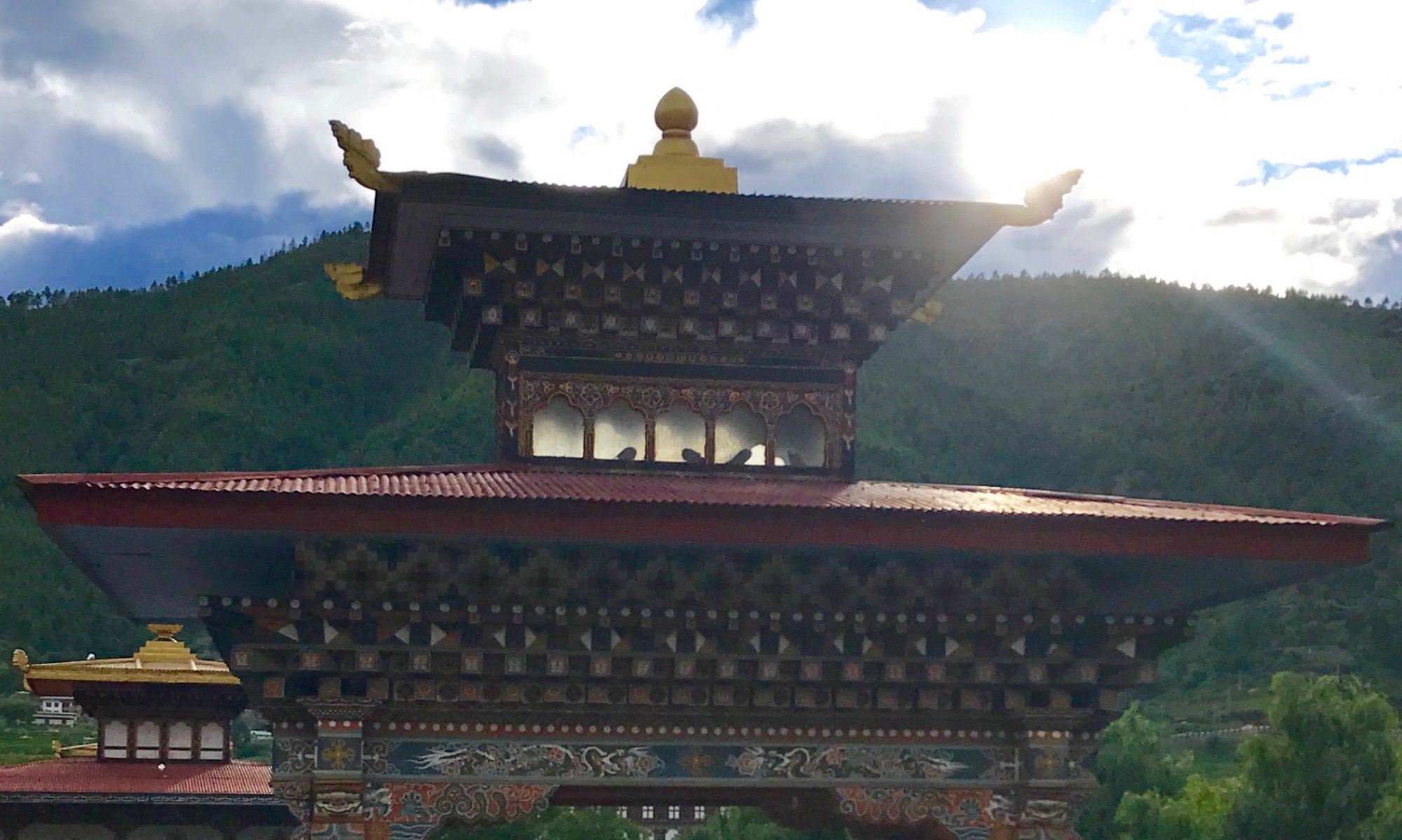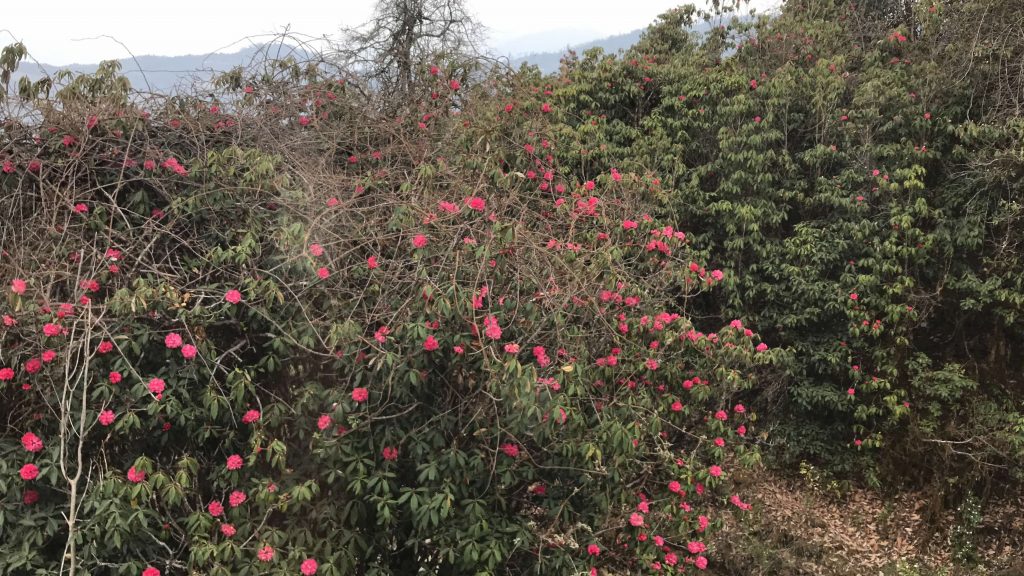
Tacking back and forth up the hills above Rangjung gave us plenty of time to appreciate the vast number of rhododendrons in bloom. Of course Sonam Norbu had to dance and everyone had to sing. (Boom boom boom, show me the way, show me the way…)
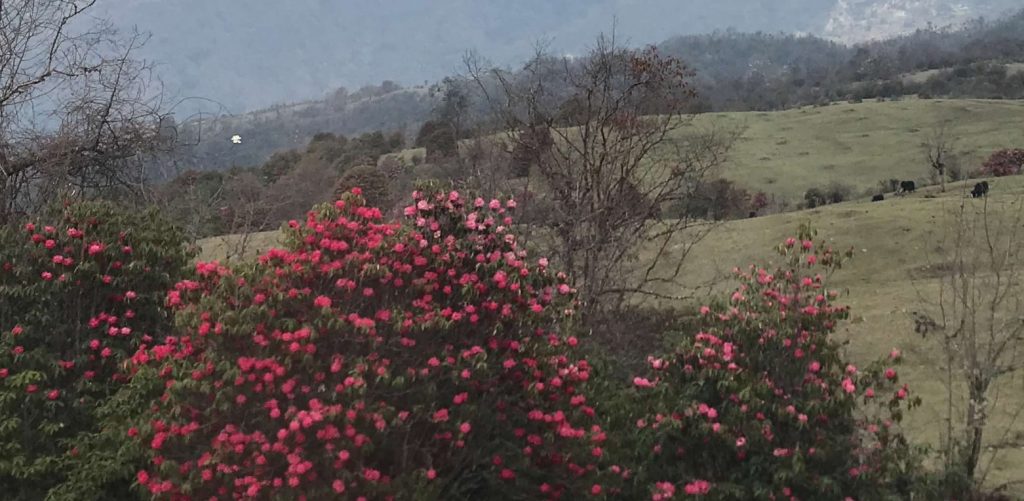
We also marveled at the road, especially when we came to parts that were just flattened rocks. This was progress! in honor of representatives from the World Health Organization coming to celebrate World Health Day in Merak.
We got out and walked, trying to spare the poor, new Yonphula coaster bus.
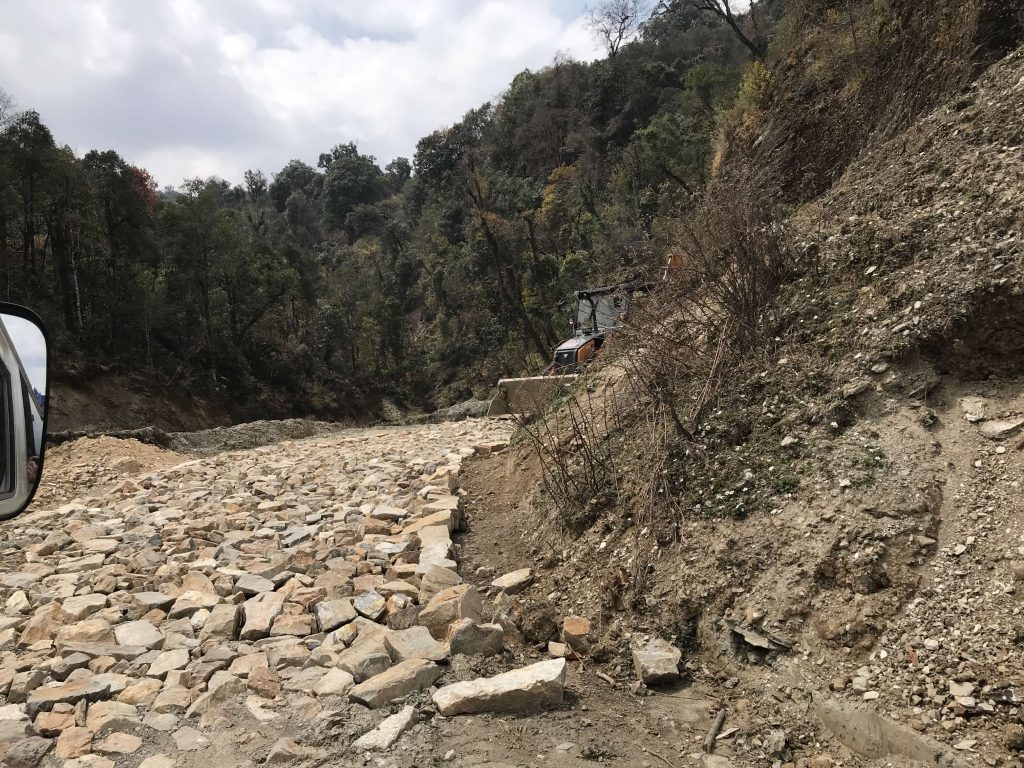
As we climbed, the clouds closed in and the ecosystem changed dramatically. We stopped for a picnic in the rain. A yak came looming up out of the mist–and students went exploring over the hills.
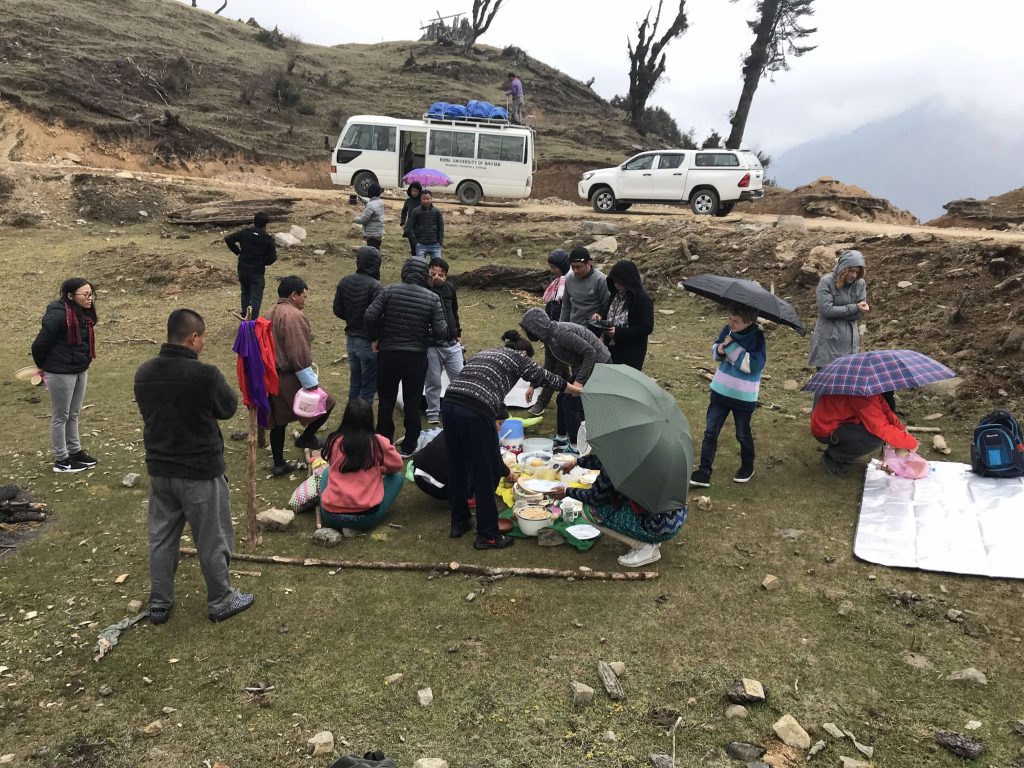
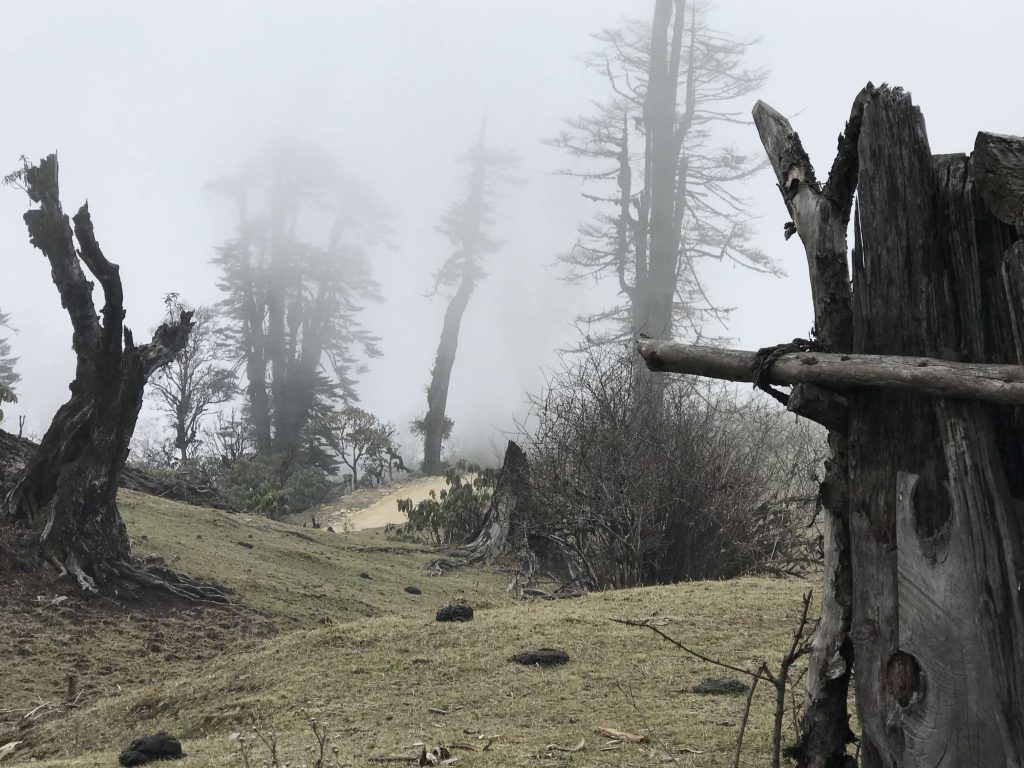
“Ha ge lo!” everyone shouted as we went over the pass. Then the students argued over what that meant. “Ha ge lo” means “victory to the good!” No, it means “This is the pass!”
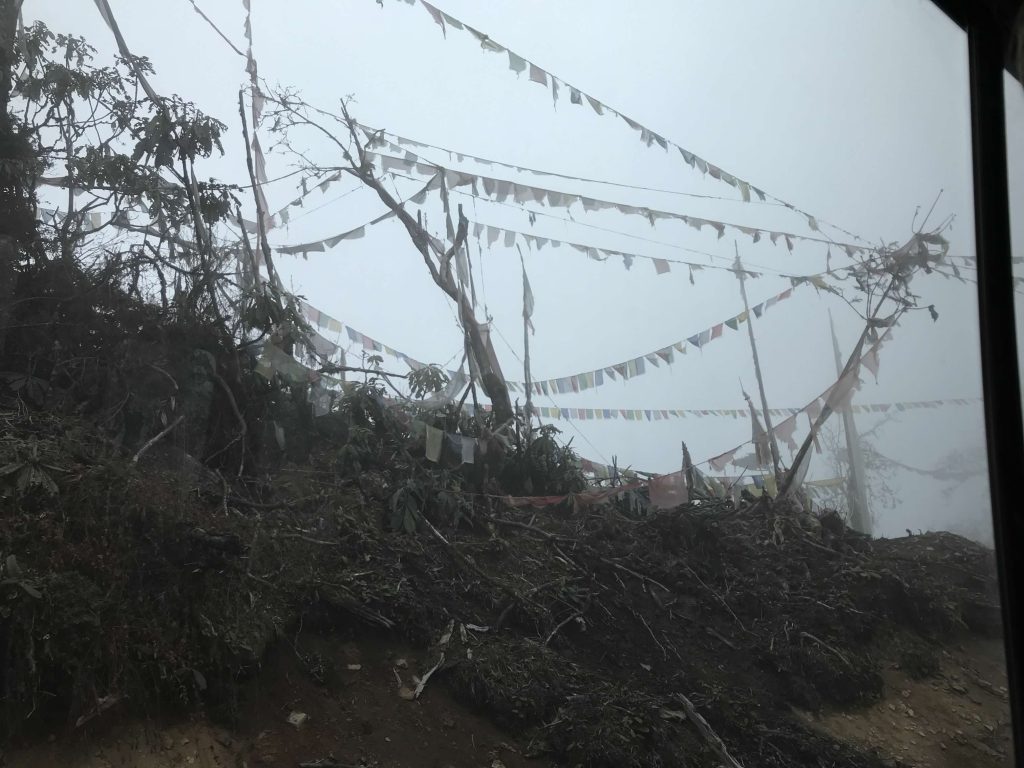
On the far side of the pass, we could see the river that had carved out the valley.
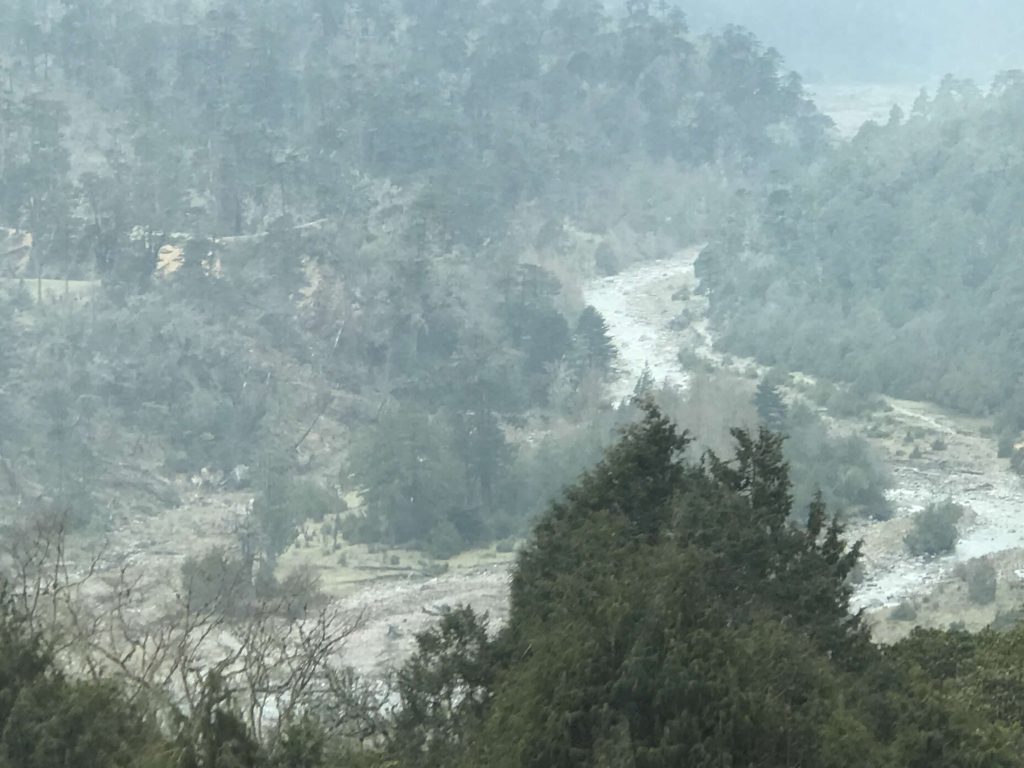
Was the fire burning compost for a field? Housing seemed relatively sparse.
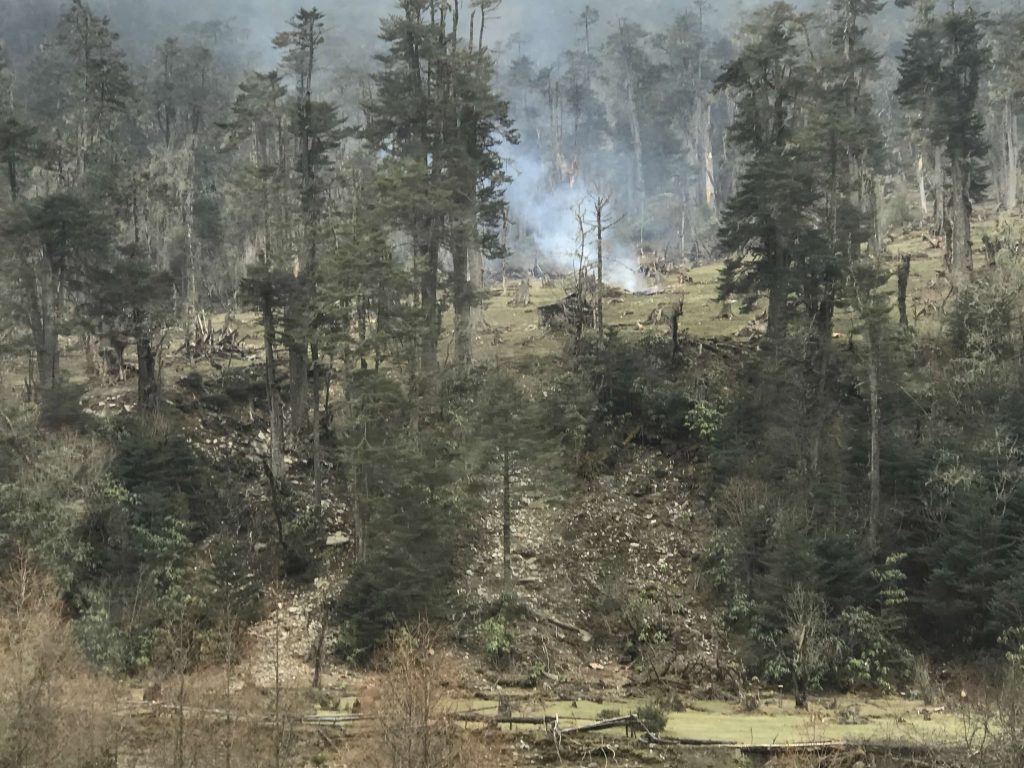
Merak hove into view, distinguishable by its various walls of manidhar. The school signs are full of Bhutan’s contemporary skills focus and broader moral teachings.
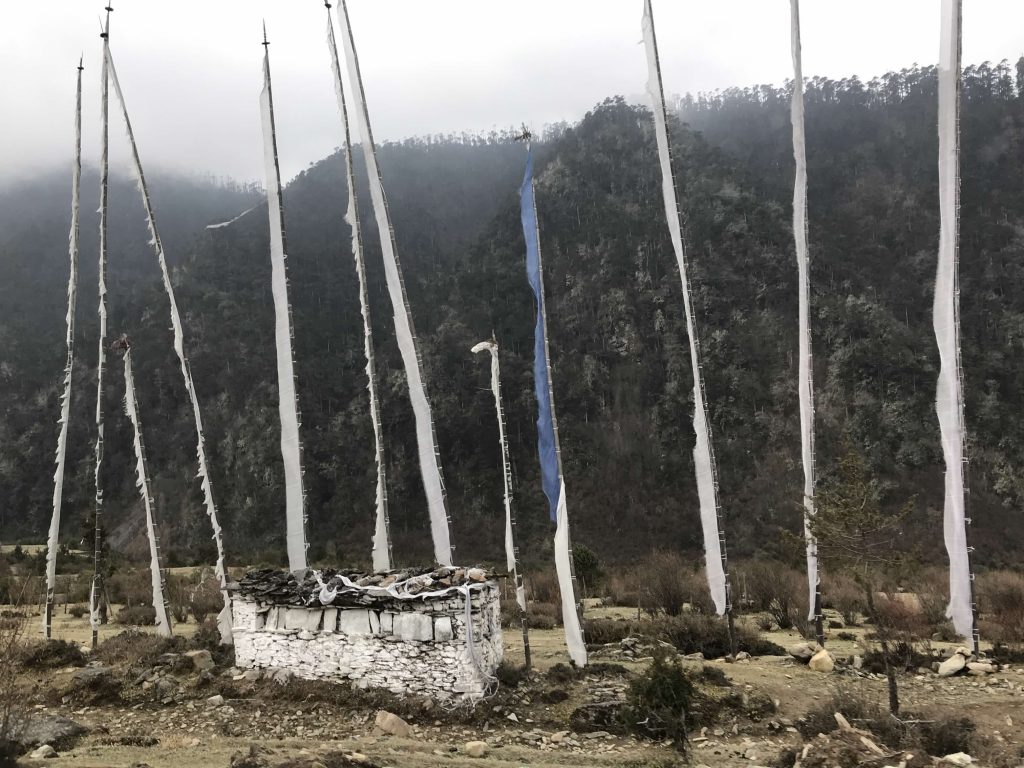
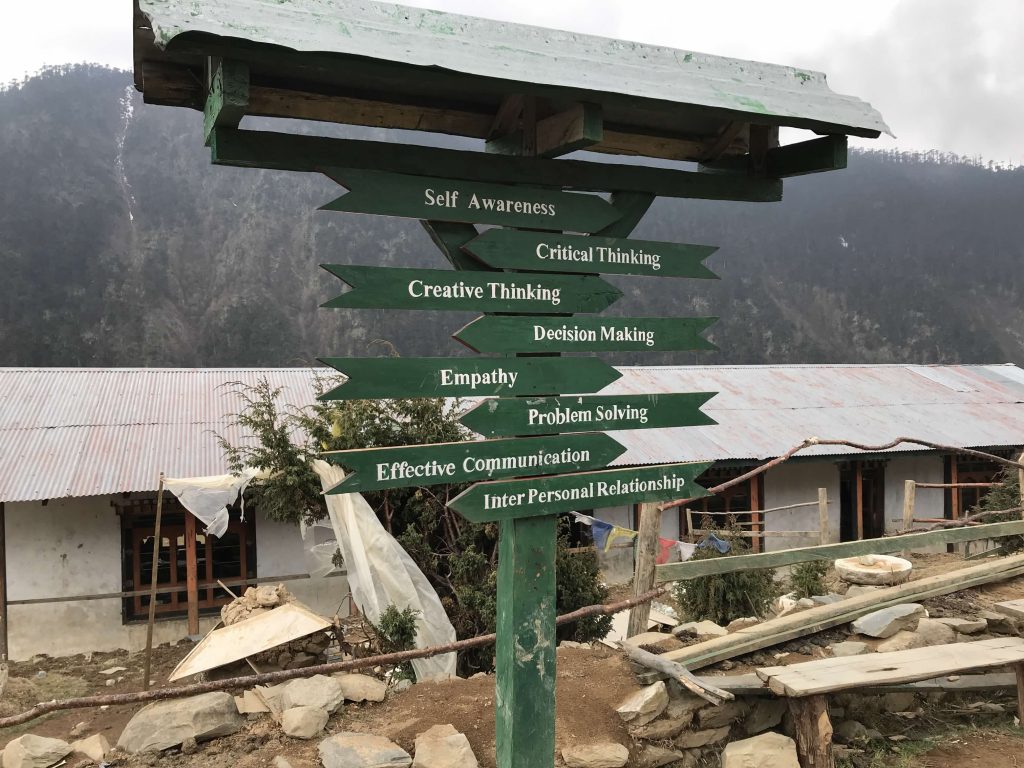
We watched while one group of children practiced some traditional dances to perform for visiting dignitaries on World Health Day. Other kids were playing on the football pitch below the school (just next to a cliff down to the river). Then it was time to go home and we all went over to say hello. Calls for a group photo led this little girl to plunk herself down on my crouching knee.
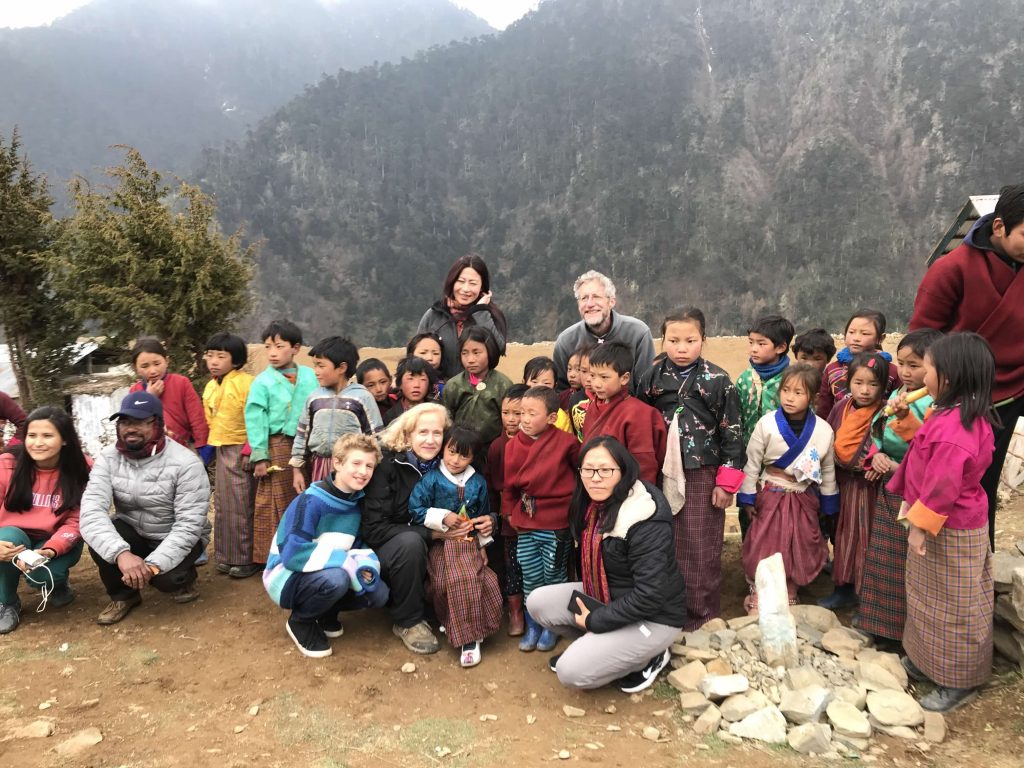
After the children dispersed, as we were heading over to the school kitchen for a cuppa, this man in one form of Brokpa dress came up and wanted to know whether I’d like to buy a hat.
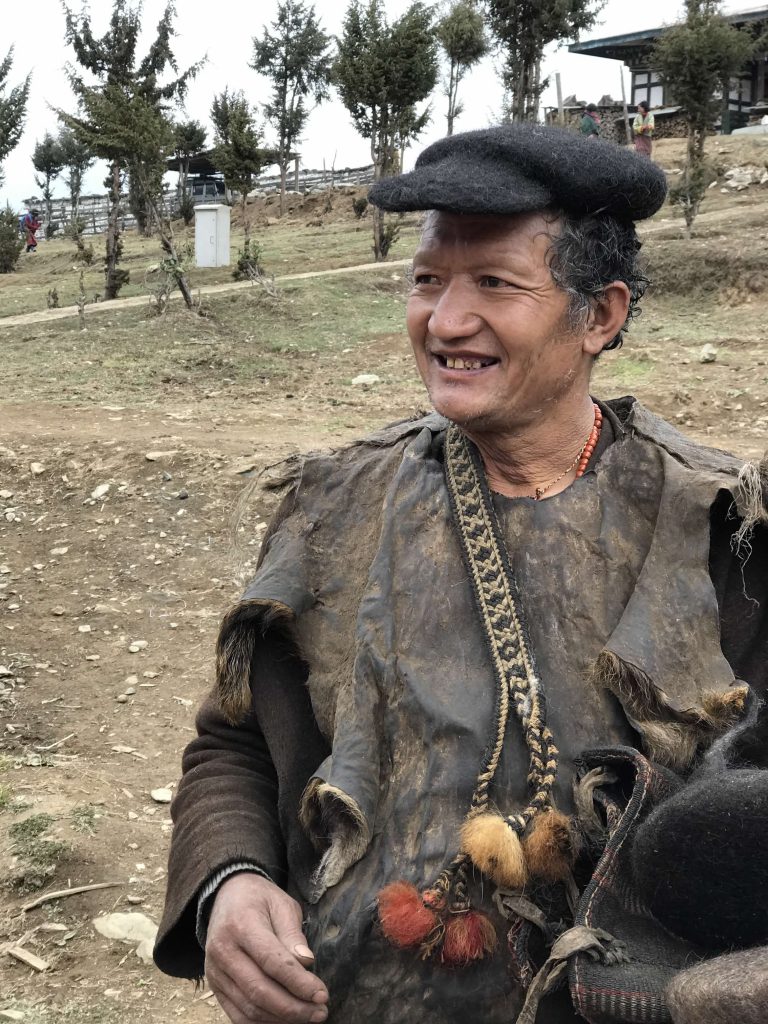
Yes! I love those hats: the tightly felted yak wool and the way the spider-like legs lead the rain away from your face and head.
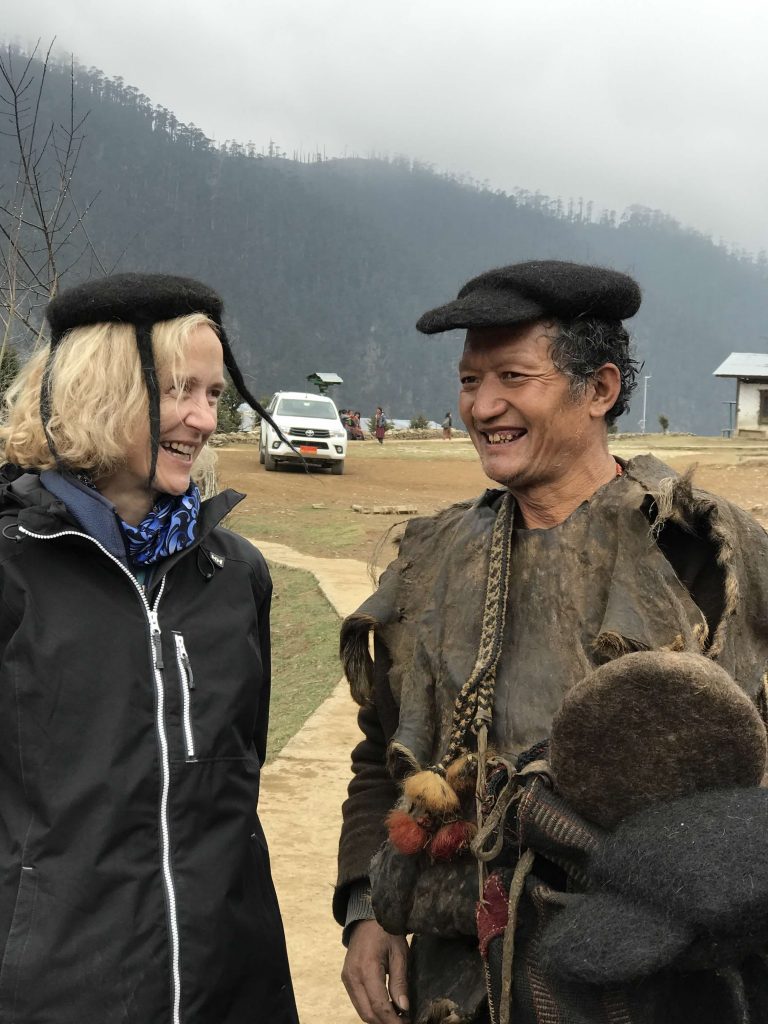
My students thought I looked very funny!
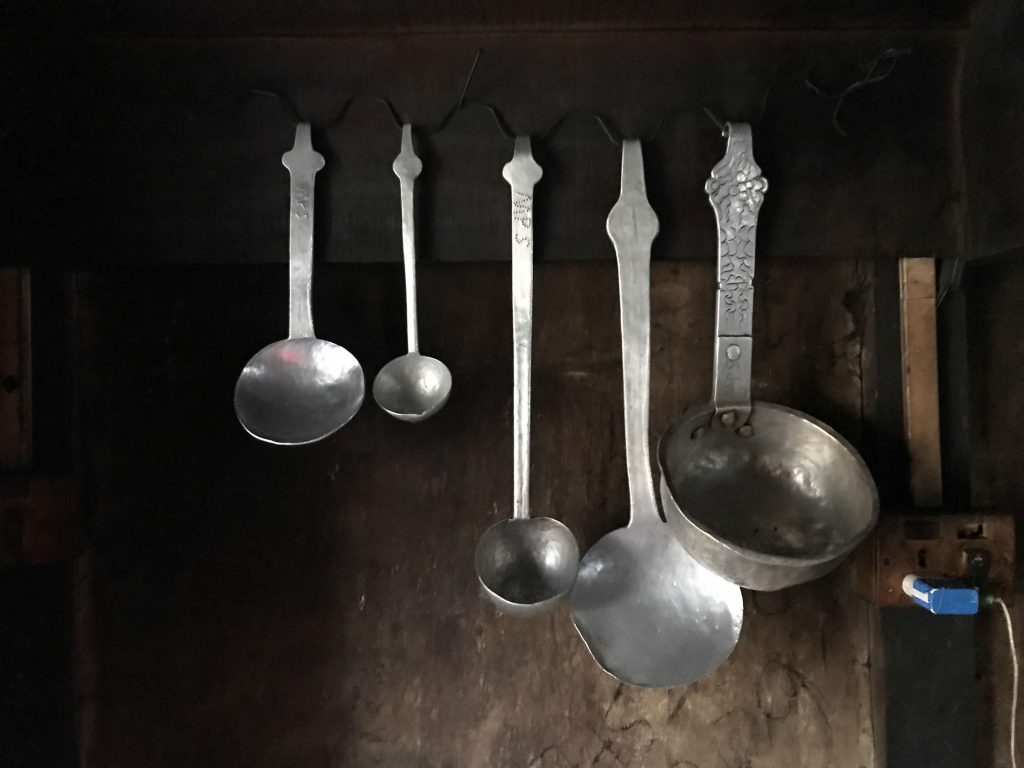
The choice in Merak seems to be cold and wet on the one hand or dark and warmer on the other. The kitchen was quite magically steamy and the cooking pots were amazing.
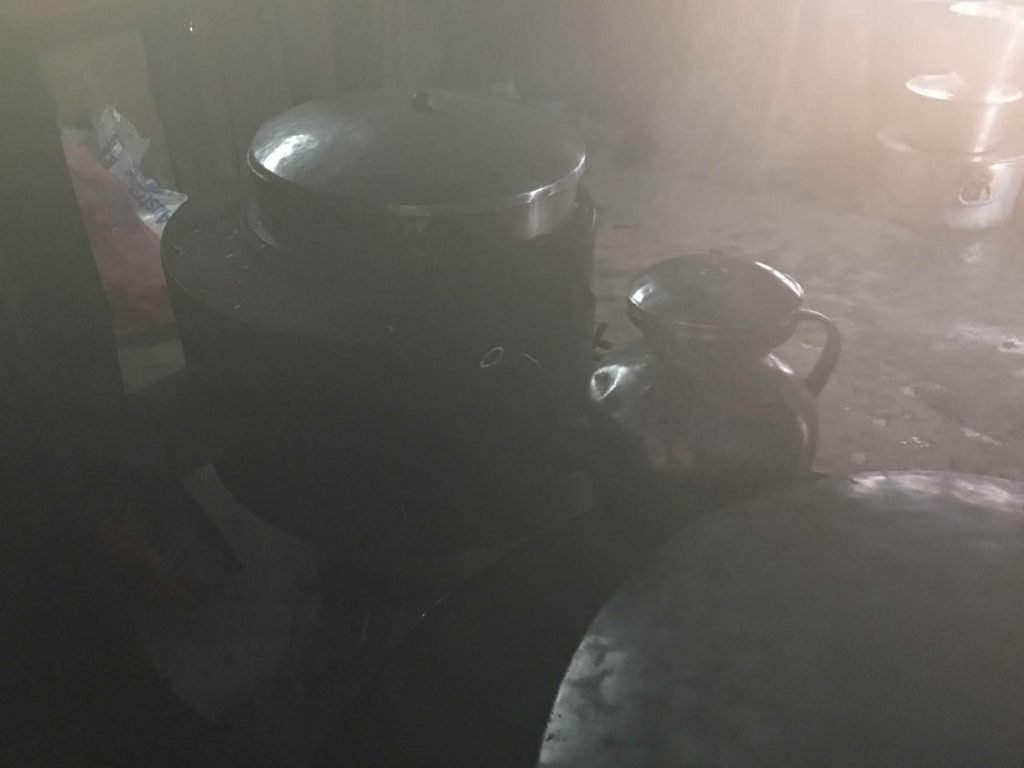
Shacha coached Jeremy on the volleyball pitch.
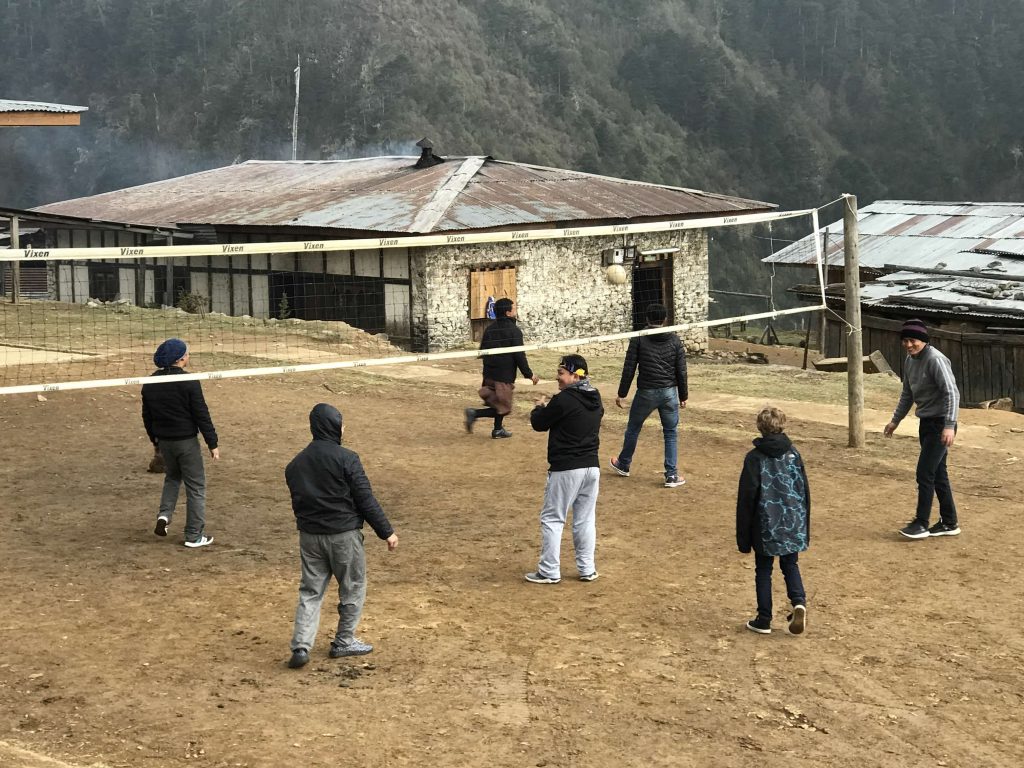
while the football field overlooking the river slowly emptied.
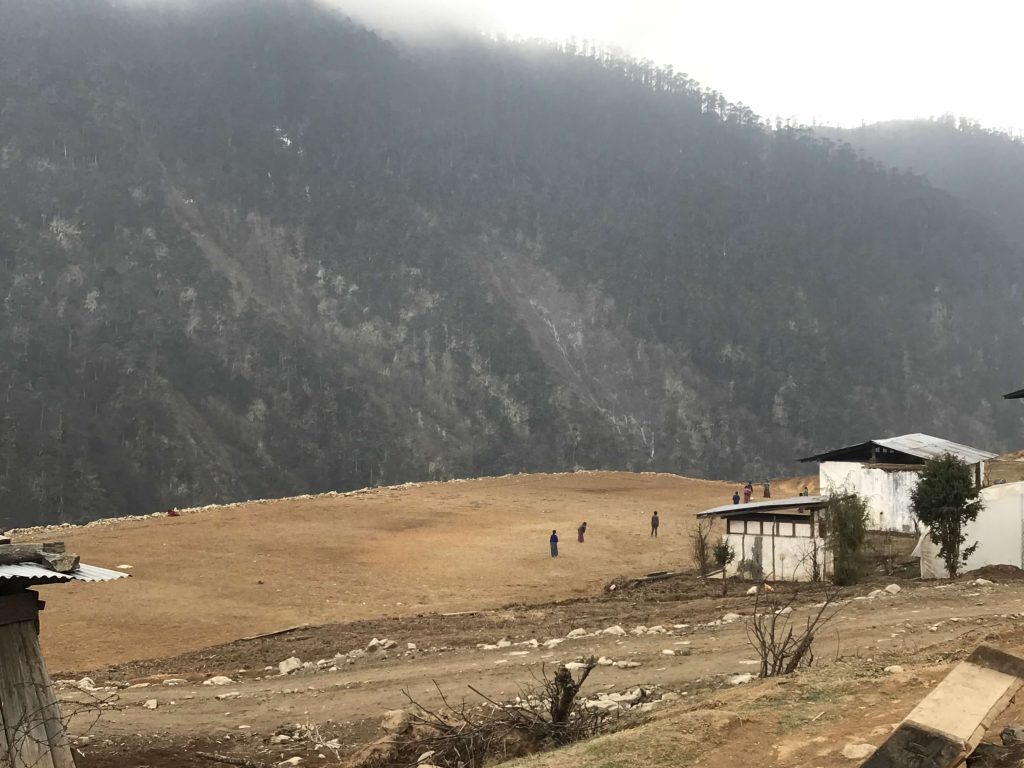
Jem seemed happy playing volleyball, so the rest of us followed the children over the stile out of the school grounds.
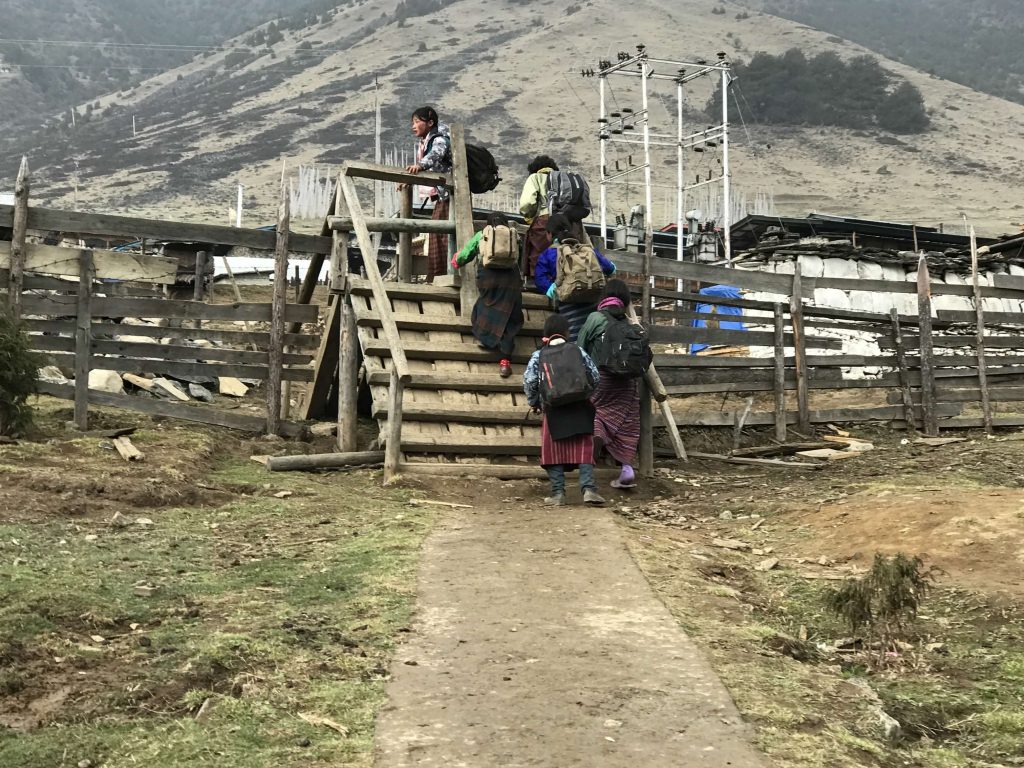
Where to go now? Left past the stupa…
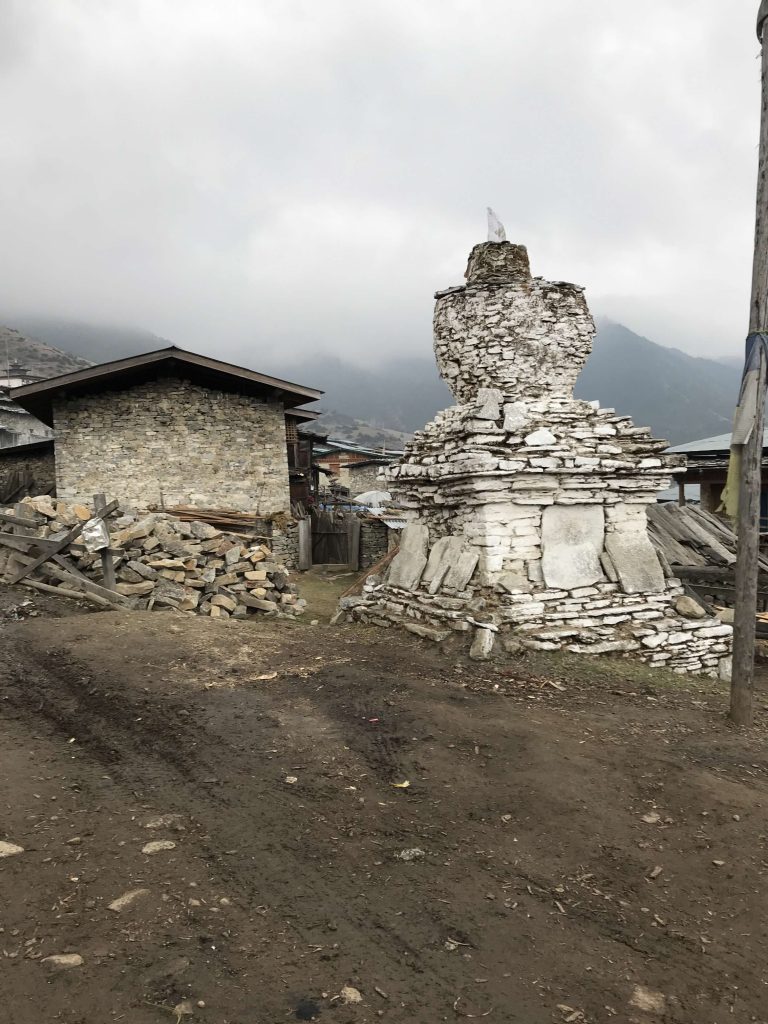
Merak is all stone and wood. Phubee and our host helped facilitate a conversation with this lovely woman who was moving a major set of stones to rebuild a seat within her enclosure.
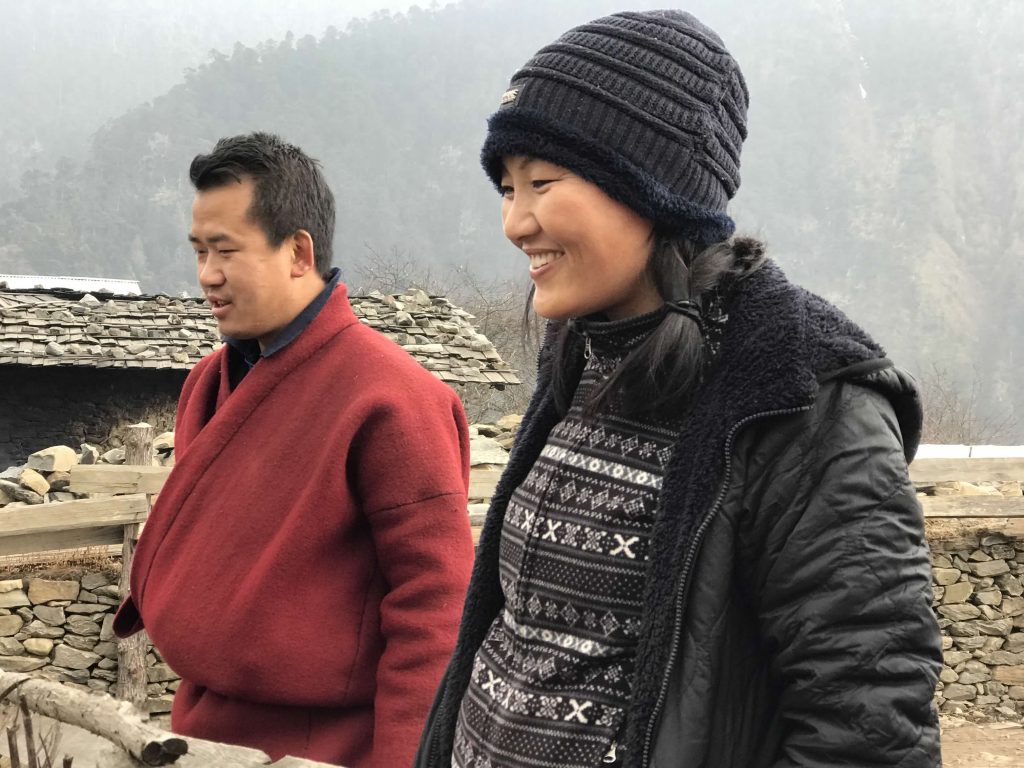
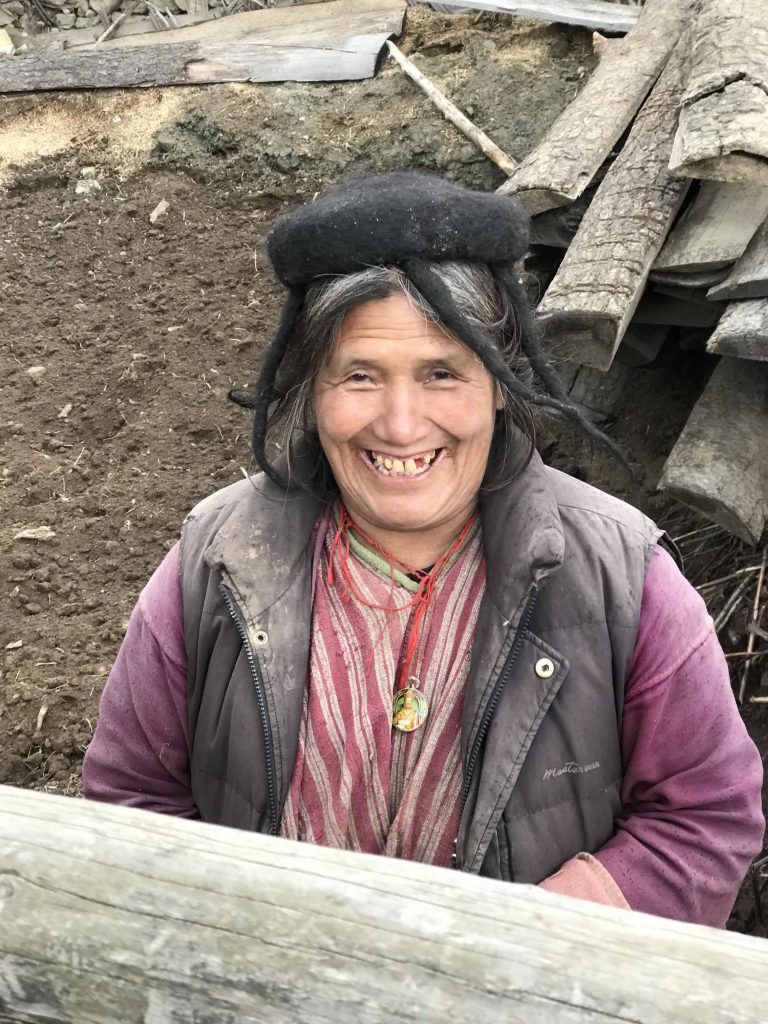
I lagged behind others to try to chat with this woman who was weaving under her yellow tarp, unfazed by cold or rain, but perhaps a little balked by language hurdles on both sides.
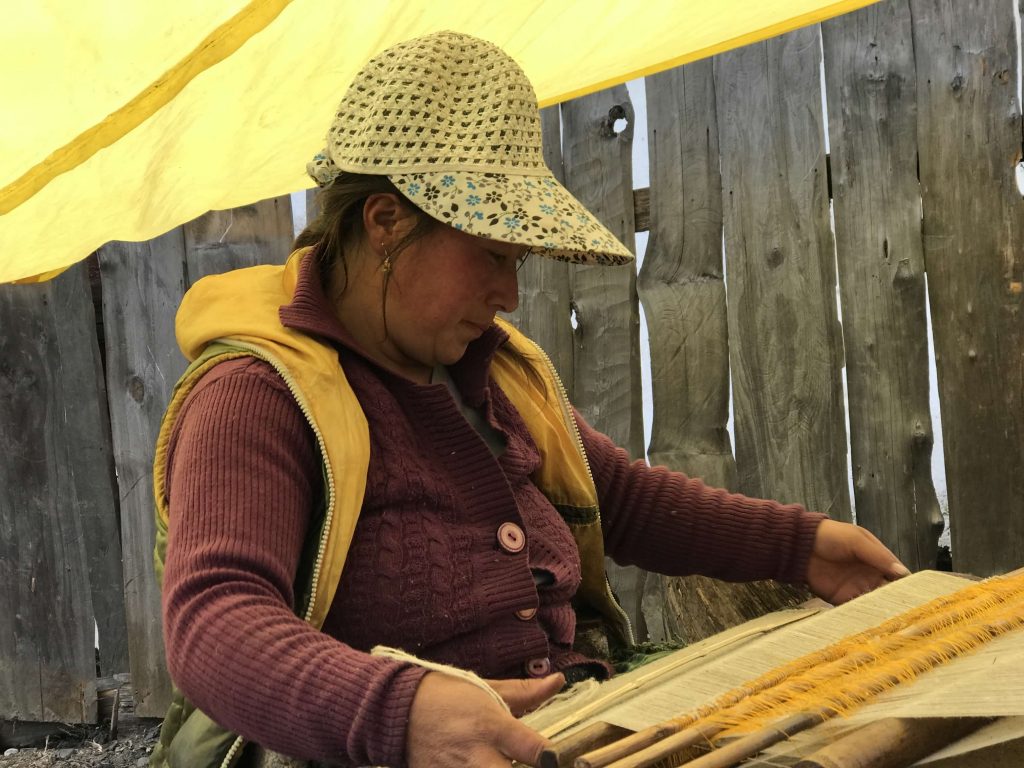
Stone, stone, more stone. So many examples of traditional Bhutanese roofing–held down by stones on the rooftop.
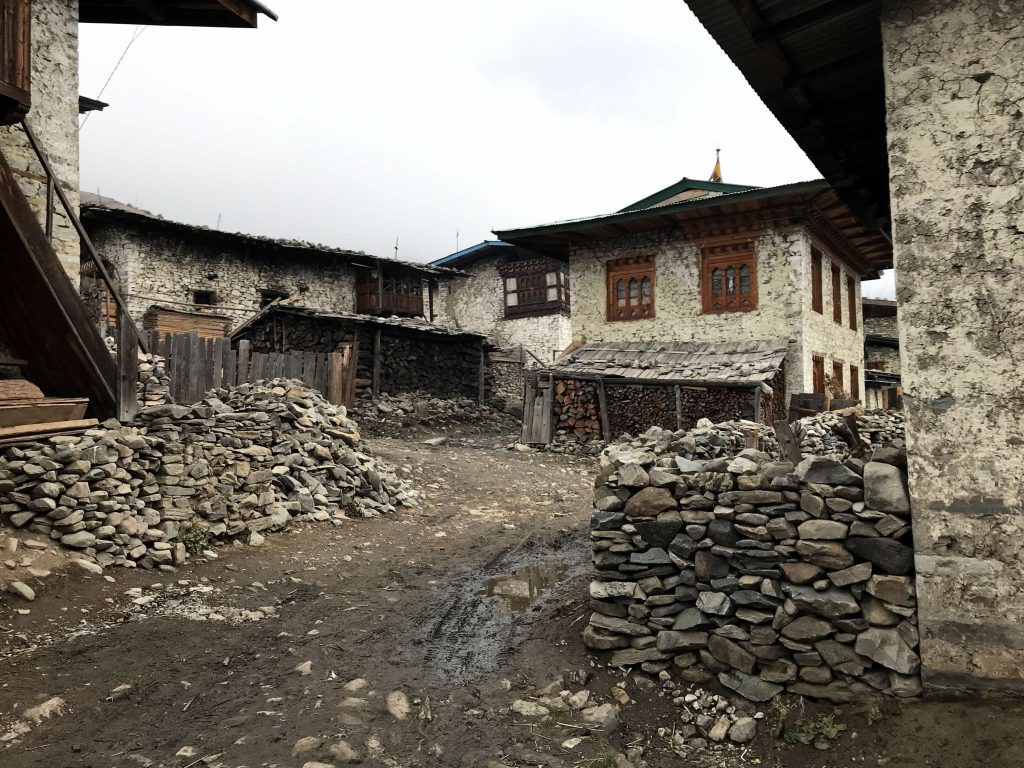
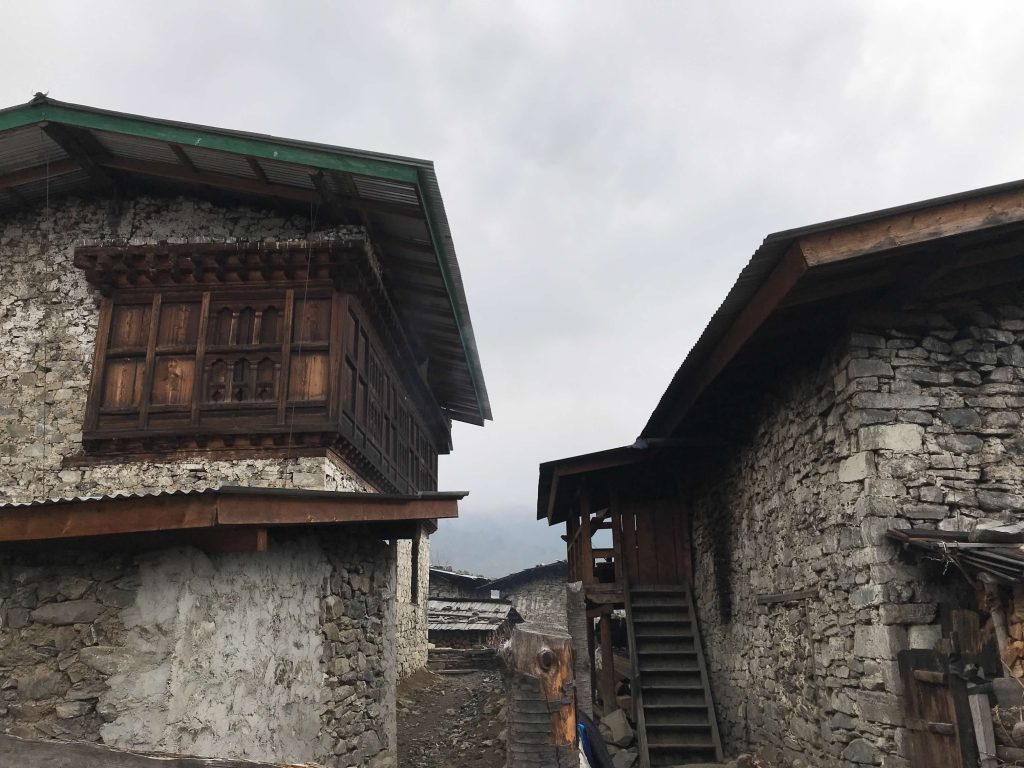
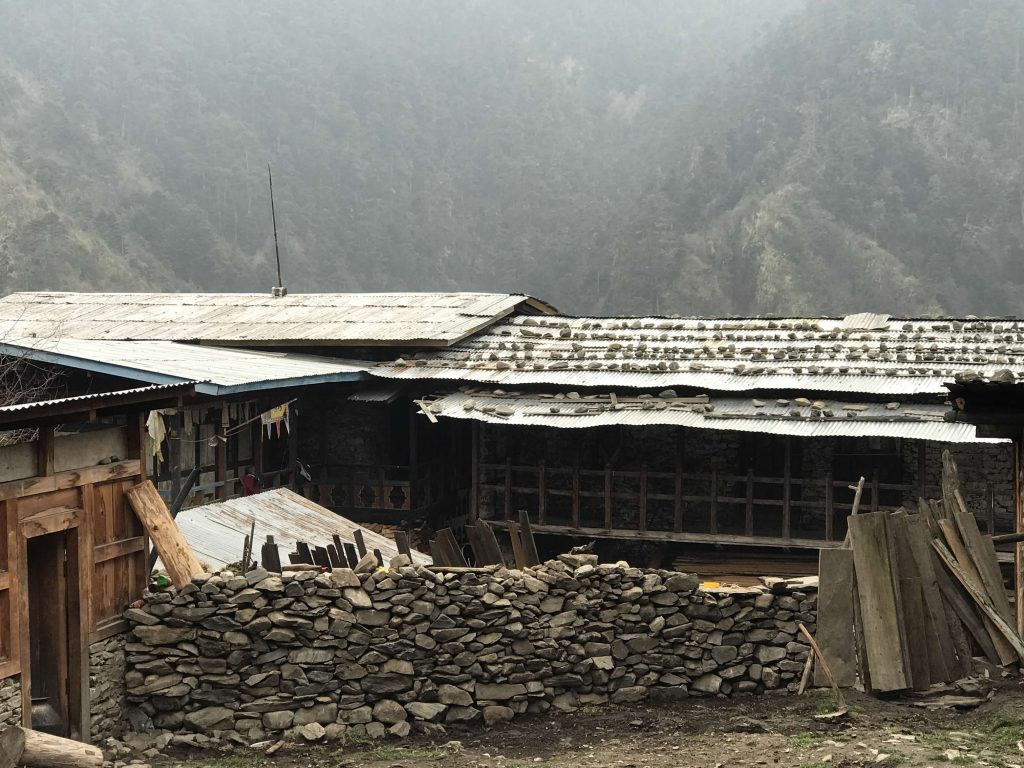
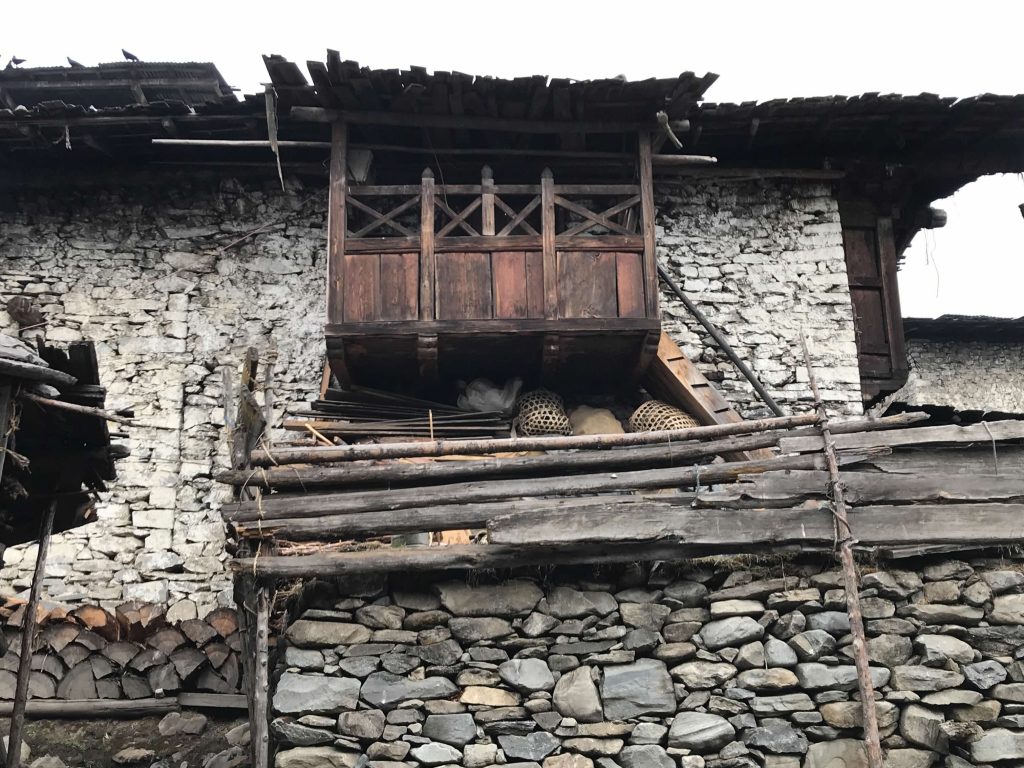
On our way to the temple, we met the man preparing for the high level visit for World Health Day. We were startled to hear from him that Merak was a place where AIDS was entering the country–the population of Merak seems small and self-contained: an unlikely spot to serve as an epicenter of disease–but then Bhutanese views on AIDS seemed to us somewhat alarmist in general. (We learned later that the community includes many traders who travel age-old routes, largely ignoring national borders.)
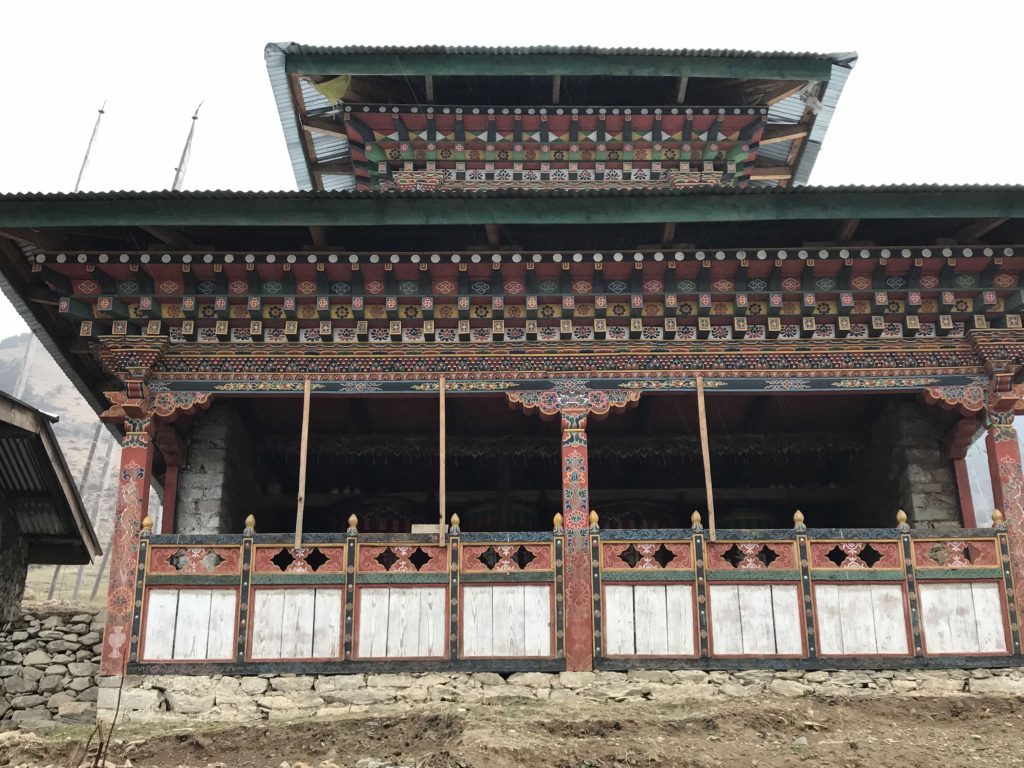
The temple itself was closed, but we wandered the grounds, which offered a panoramic view over the village and the valley.
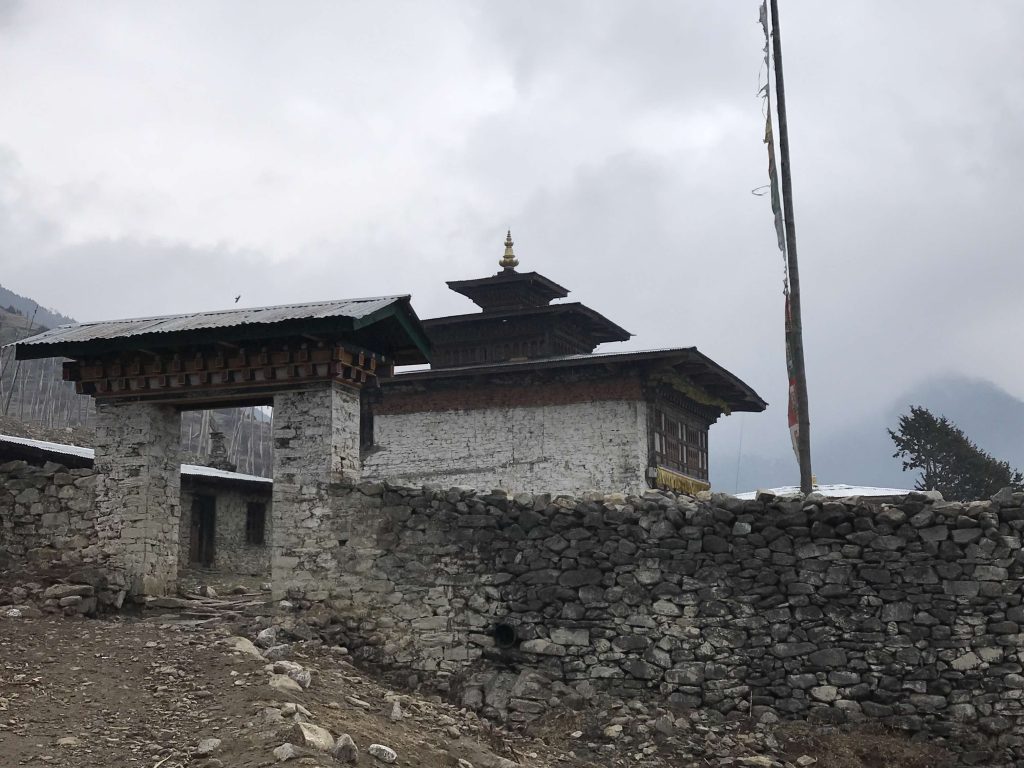
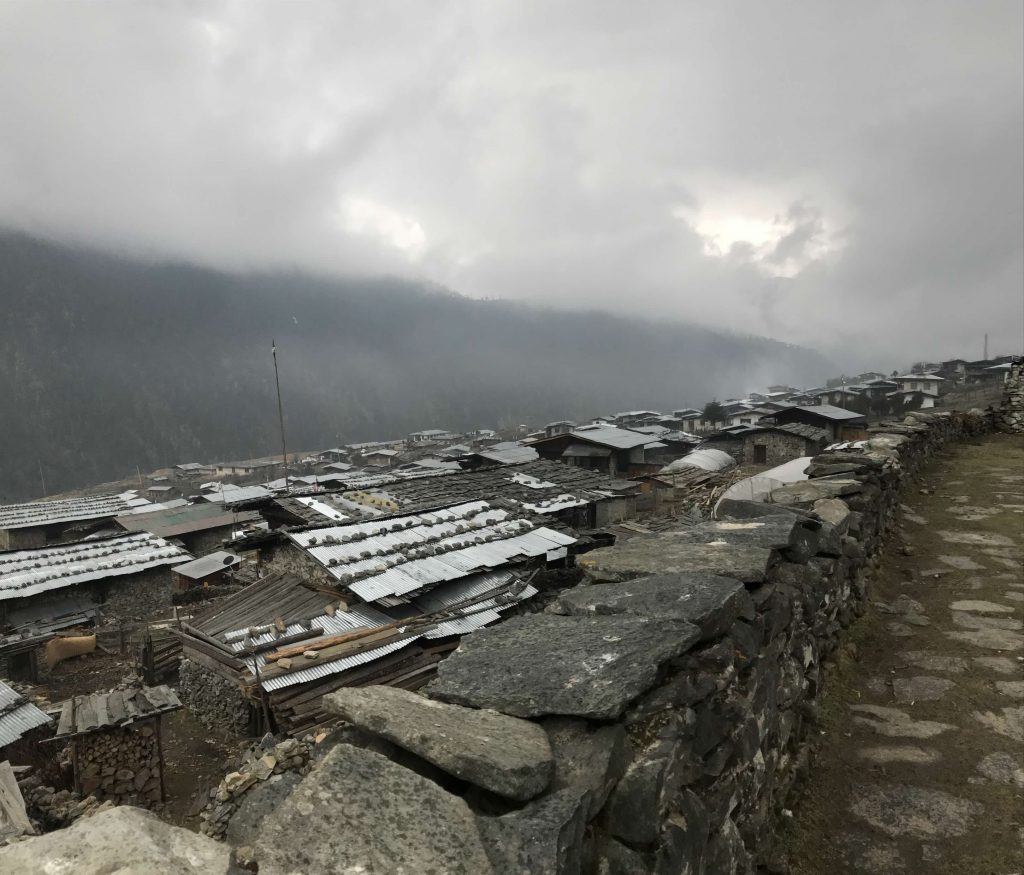
This line of grey roof tops under shifting fog sums up my sense of Merak.
The students didn’t like the village, but I found it very evocative.
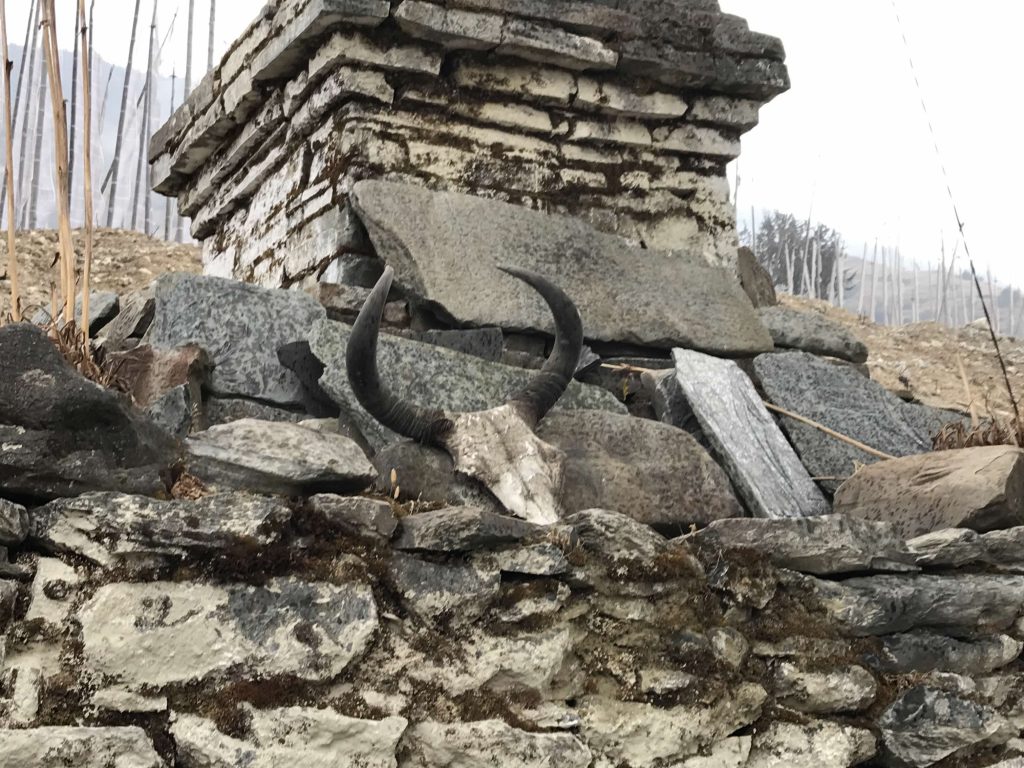
We poked our heads in a local shop. The students were amazed to find the prices as good or cheaper than prices in Trashigang (they had expected prices to be much higher due to the cost of transportation to this much more remote location). Selection seems a little limited, however…
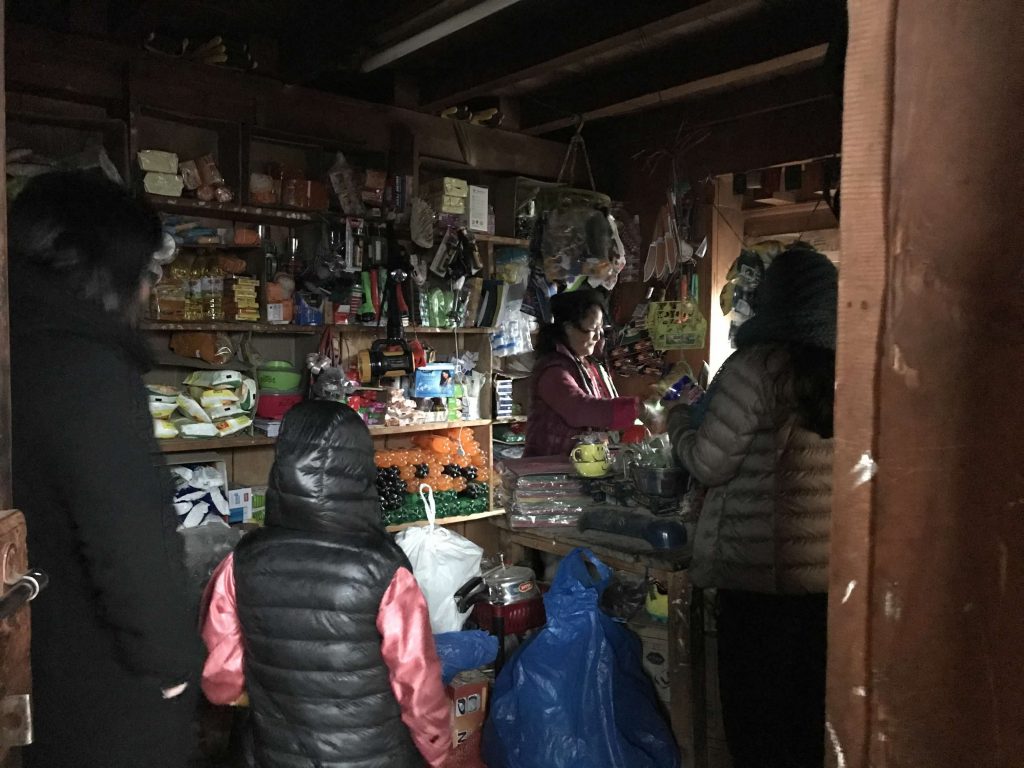
Members of our group huddled around a bokhari in a room attached to a shop near the school. Again, the choices seem to me dark, enclosed, and warm versus open, grey, wet, and cold. But very evocative.
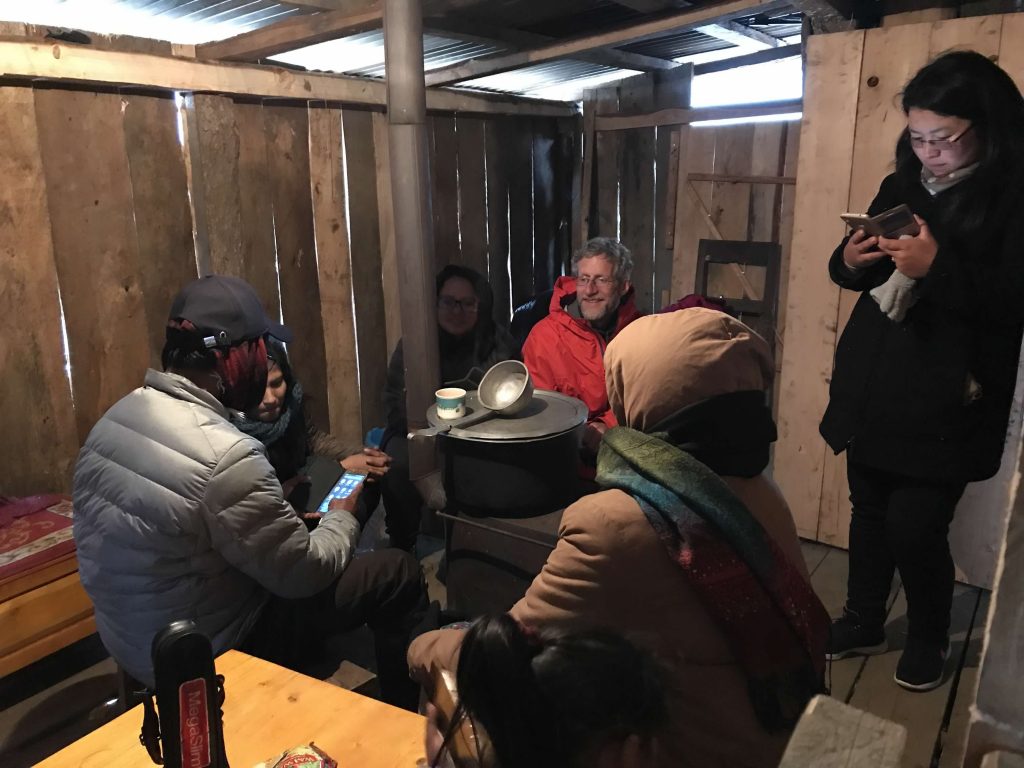
The fog on the metal roofs gave the effect of snow–even in April.
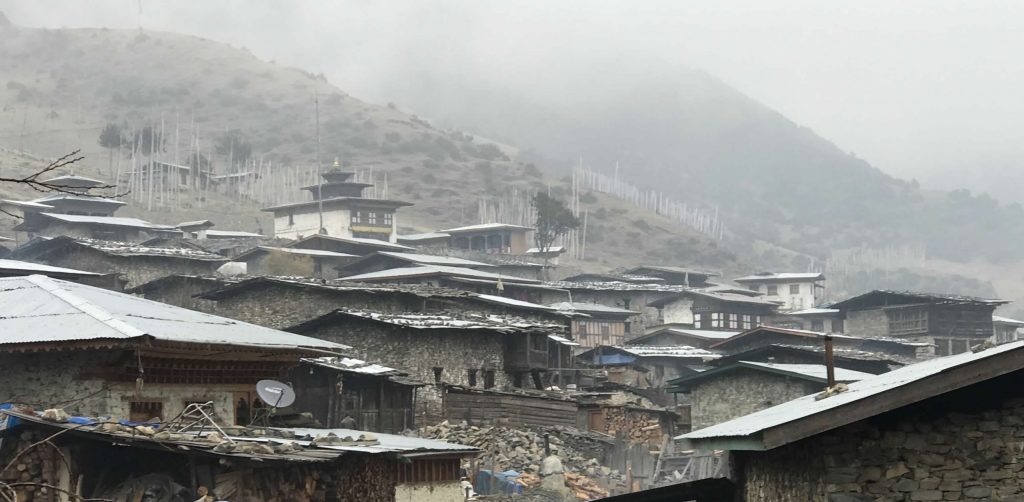
Ritual bamboo creations seemed more brightly died than the versions we saw in Kanglung.
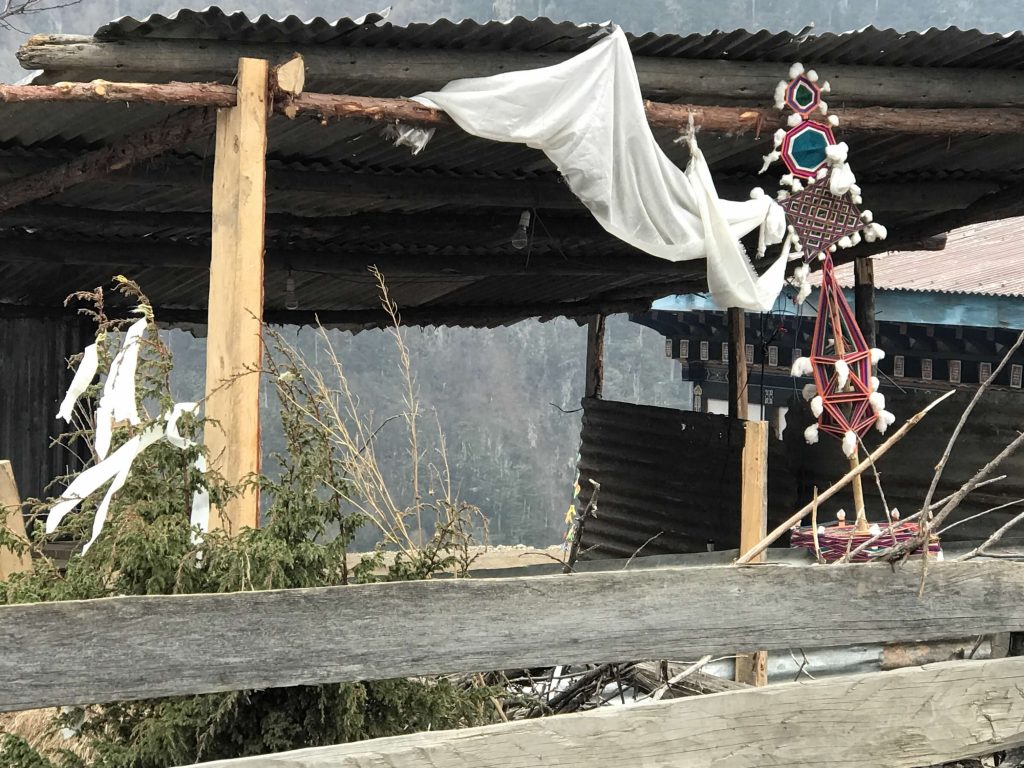
The long mani walls are evidently an older form of chorten: these are full of plaques so old that the writing has worn away entirely.
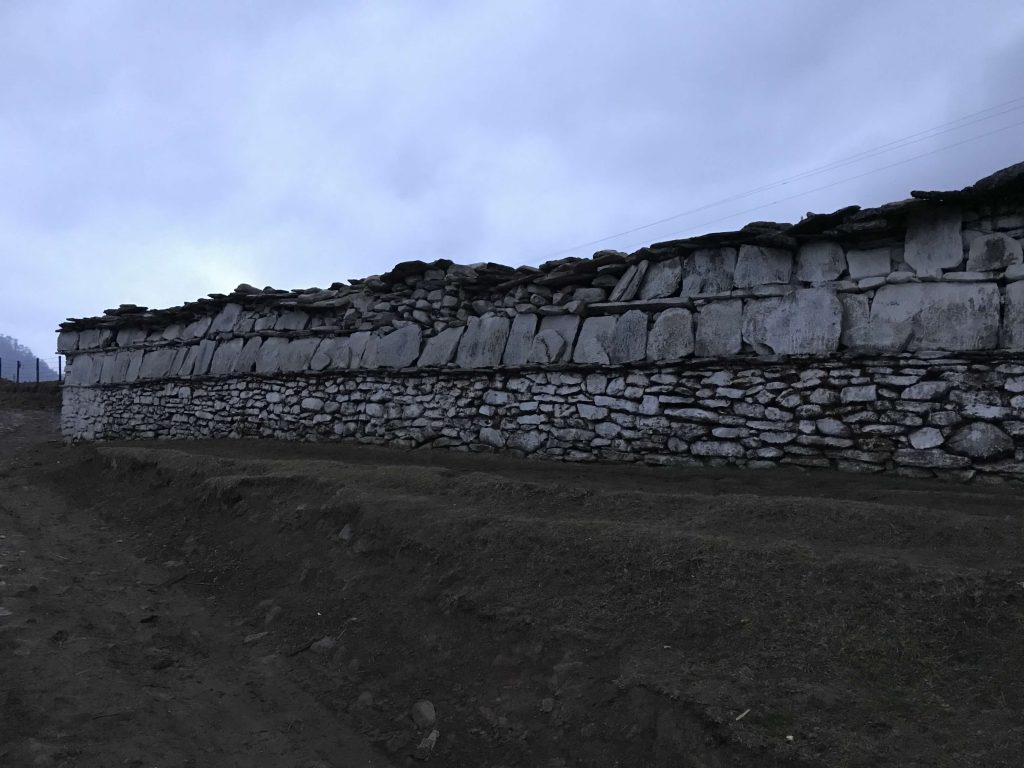
Jeremy met up with Phubee and Chador and some others of ‘the ladies’ and they had hiked up to the hill with the manidhar on the outskirts of town. Jeremy and Chador practiced their magical powers on the hillside.
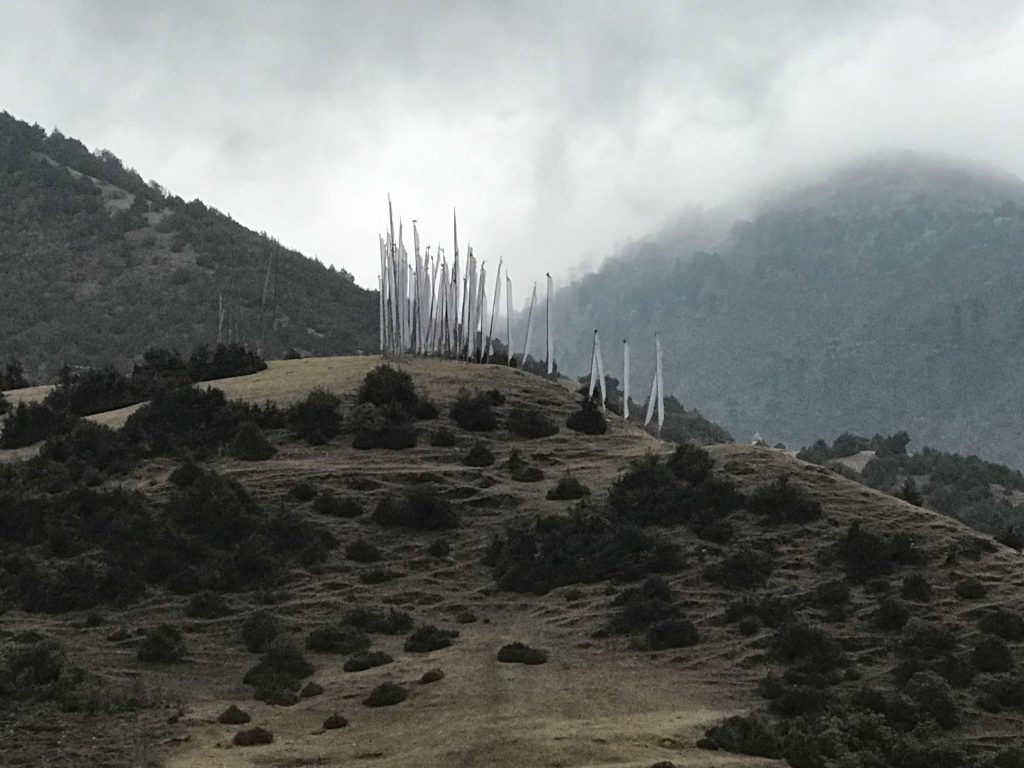
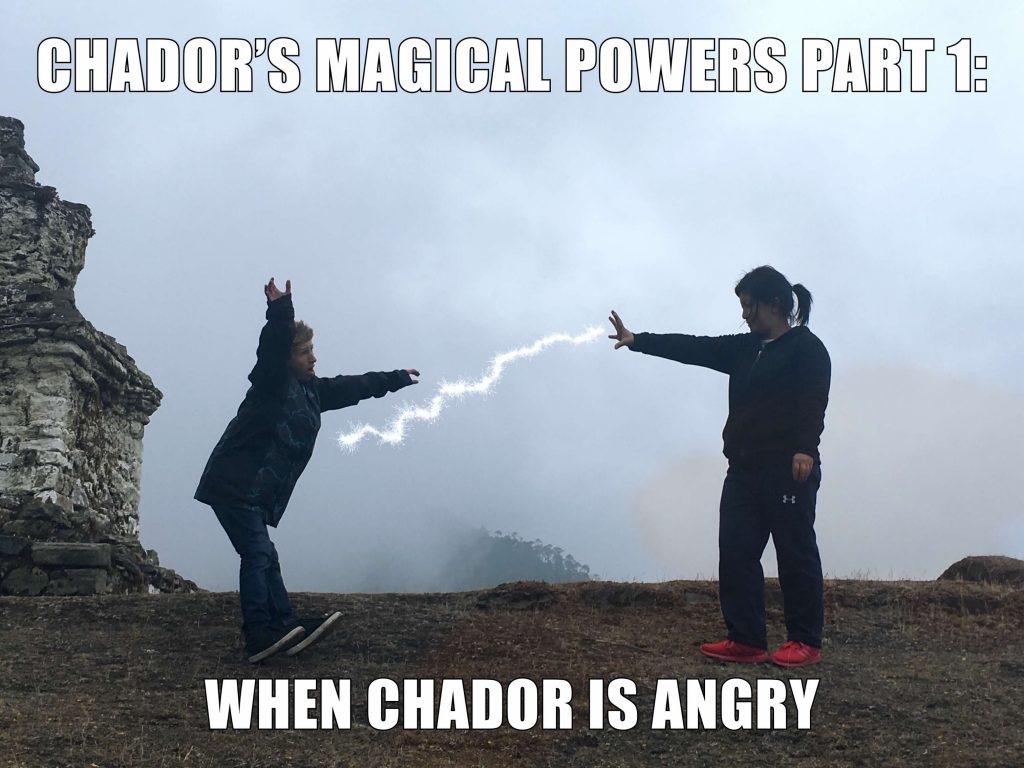
James and I also wandered out that way separately. We were struck by the clothes washing area preserved by this wooden spout, providing (we assumed) clean water for the laundry we could see drying nearby.
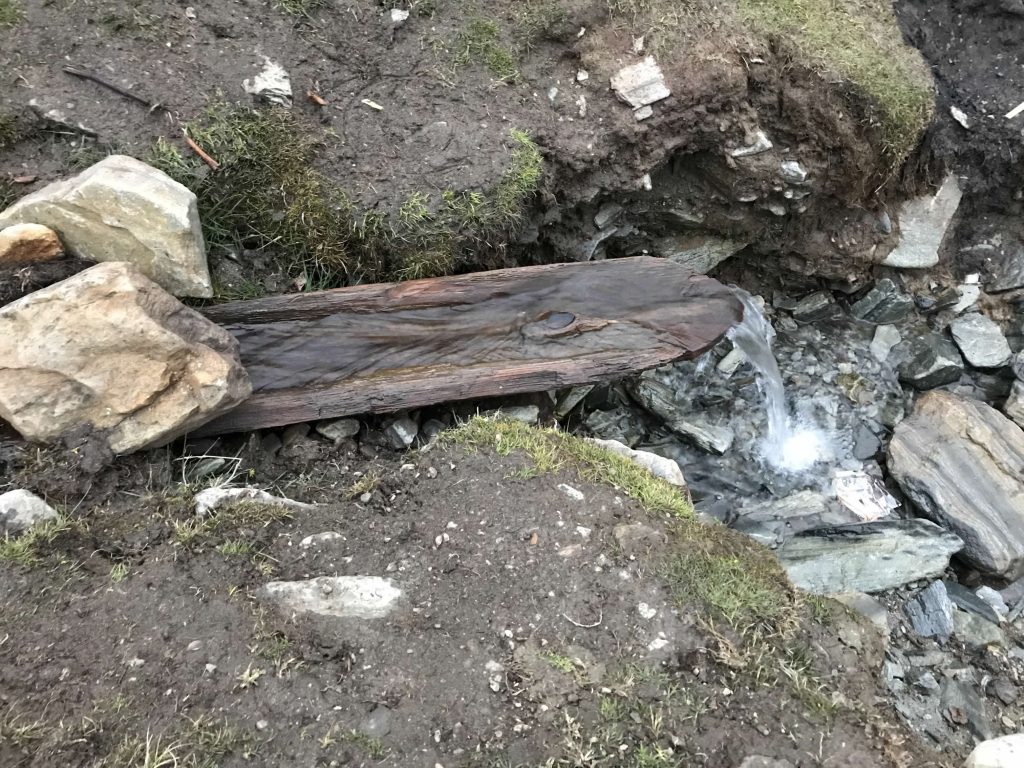
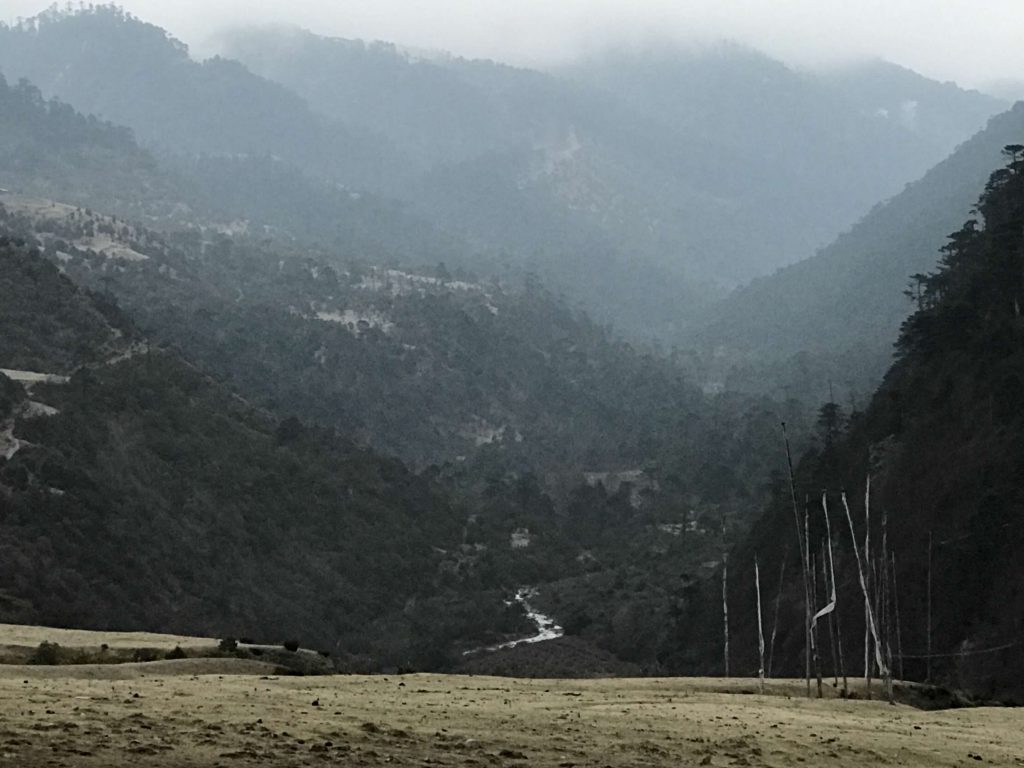
We ate dinner in the school auditorium, at long tables. Every time someone came in, the frigid wind followed them. It’s hard to describe how very cold it was. Jeremy and Eden offered us a tae kwon do battle on the stage. (Eden didn’t know anything about tae kwon do, but she was game anyway.) After dinner, we retreated to the classroom set aside for us, while the students gathered in two rooms: men and women separated.
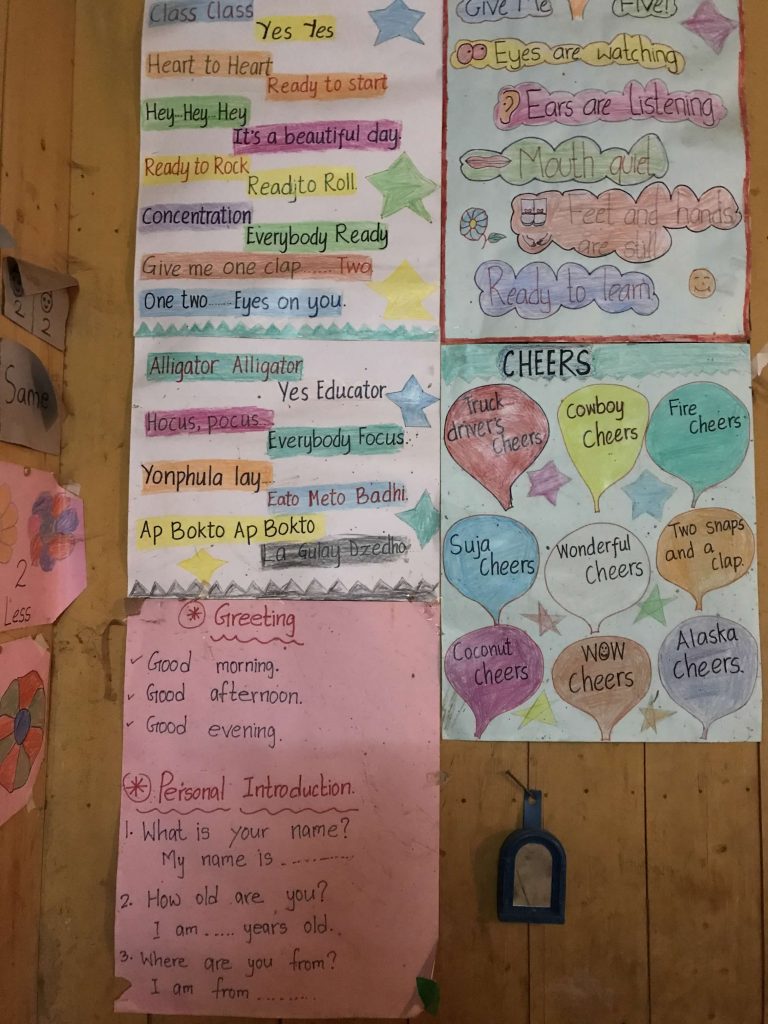
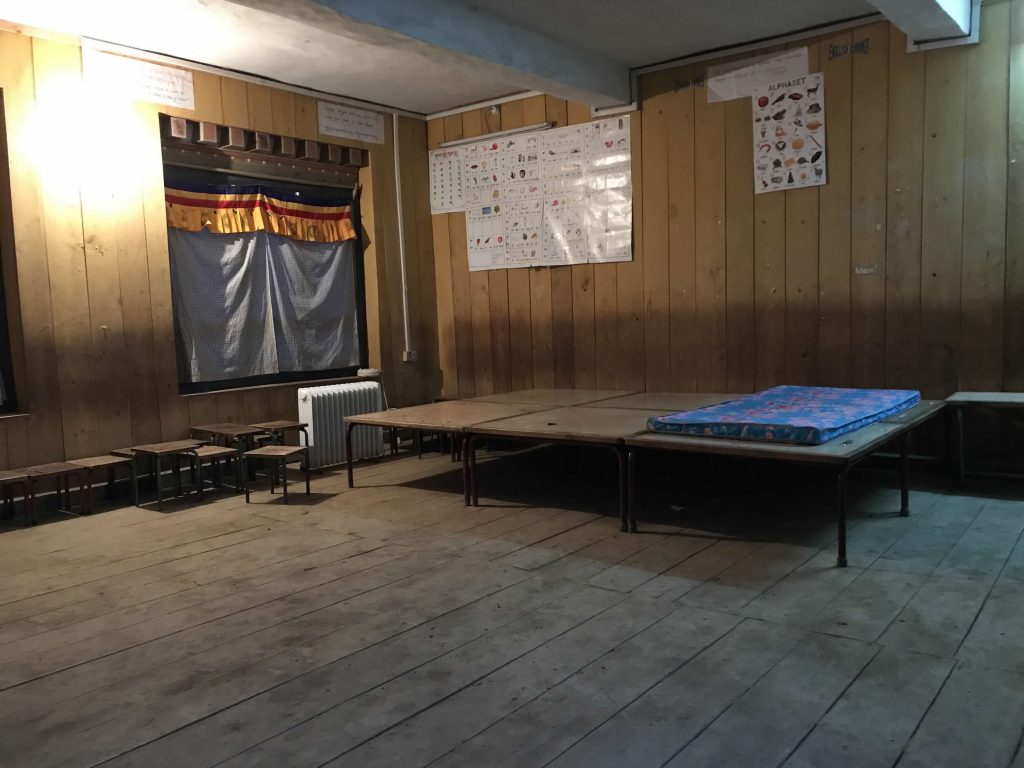
But Chador and Phubee went to visit Chador’s uncle, a kind of park ranger for the Sakteng Wildlife Refuge, and he told them so many scary stories, they couldn’t sleep and begged a couple of the men to come and sleep on their side of the building. Aum Jomo can be very fierce with those who break her rules–and she doesn’t like strangers.
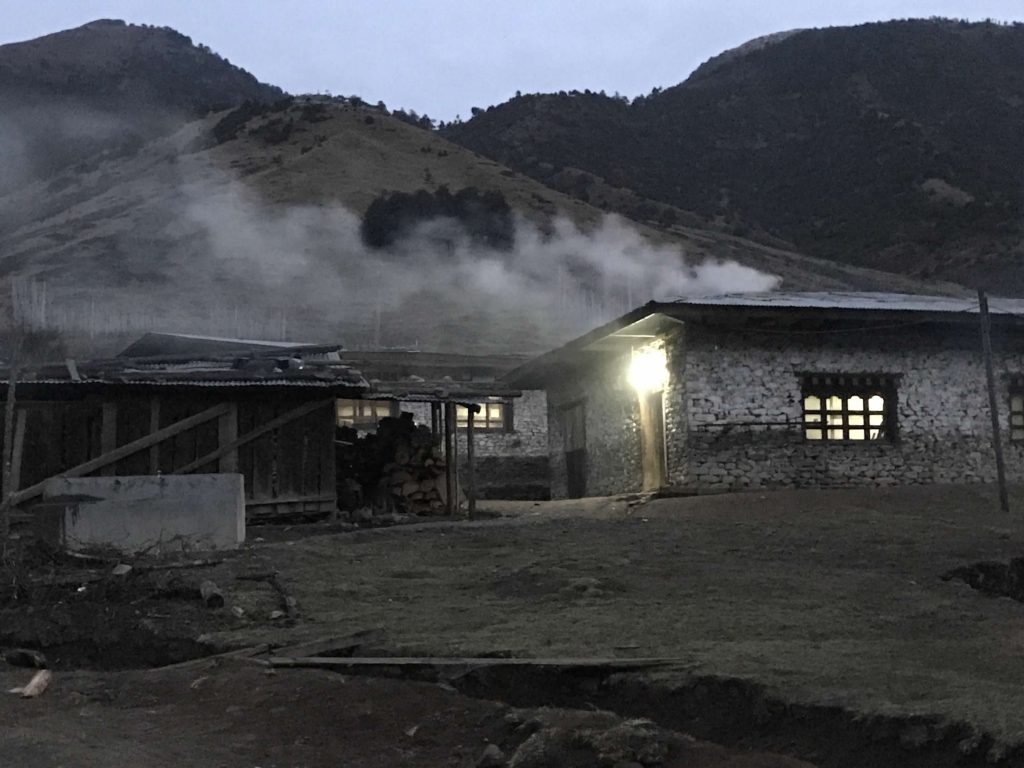
After sundown, the moon and the mountain dominate the landscape–almost as much as Aum Jomo dominated Chador and Phubee’s dreams.
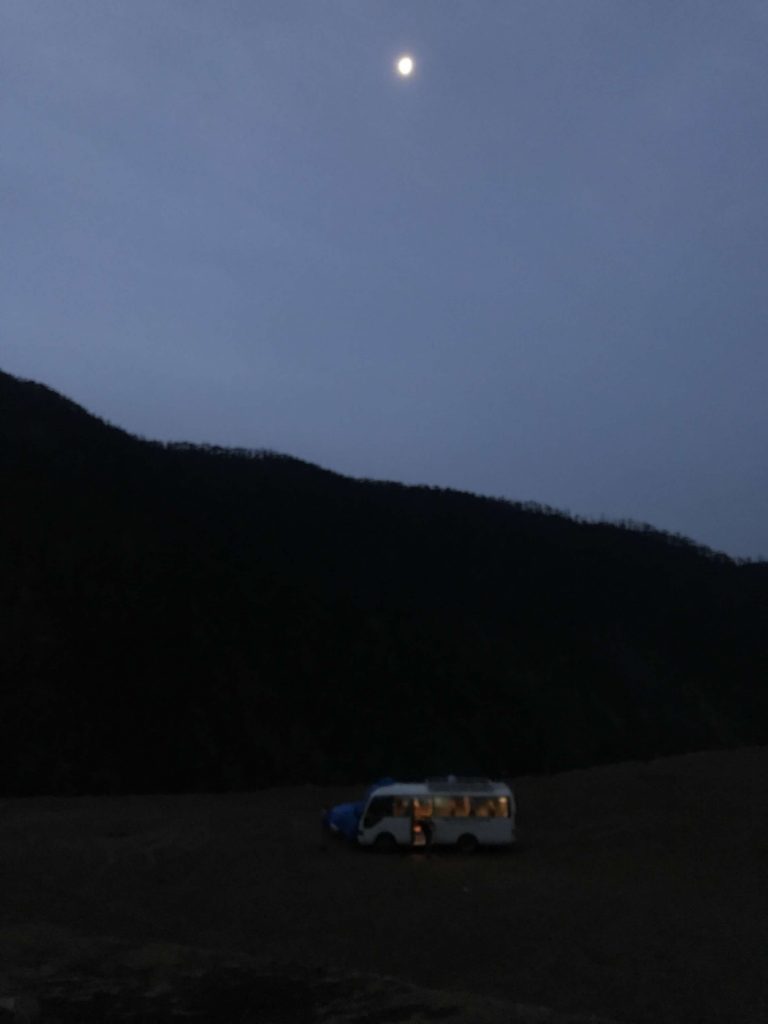
We had an early morning start, both because of the long travel time to Sakteng and in order to clear the way for the visiting dignitaries coming to celebrate World Health Day. Phubee was in charge of the chargers!
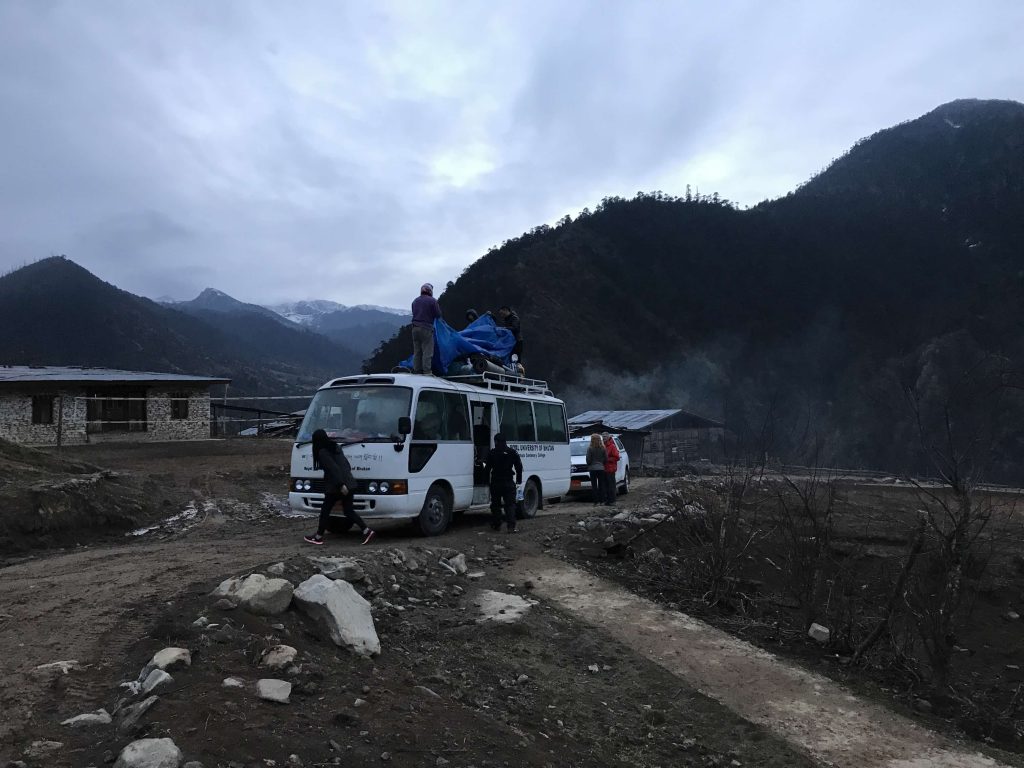
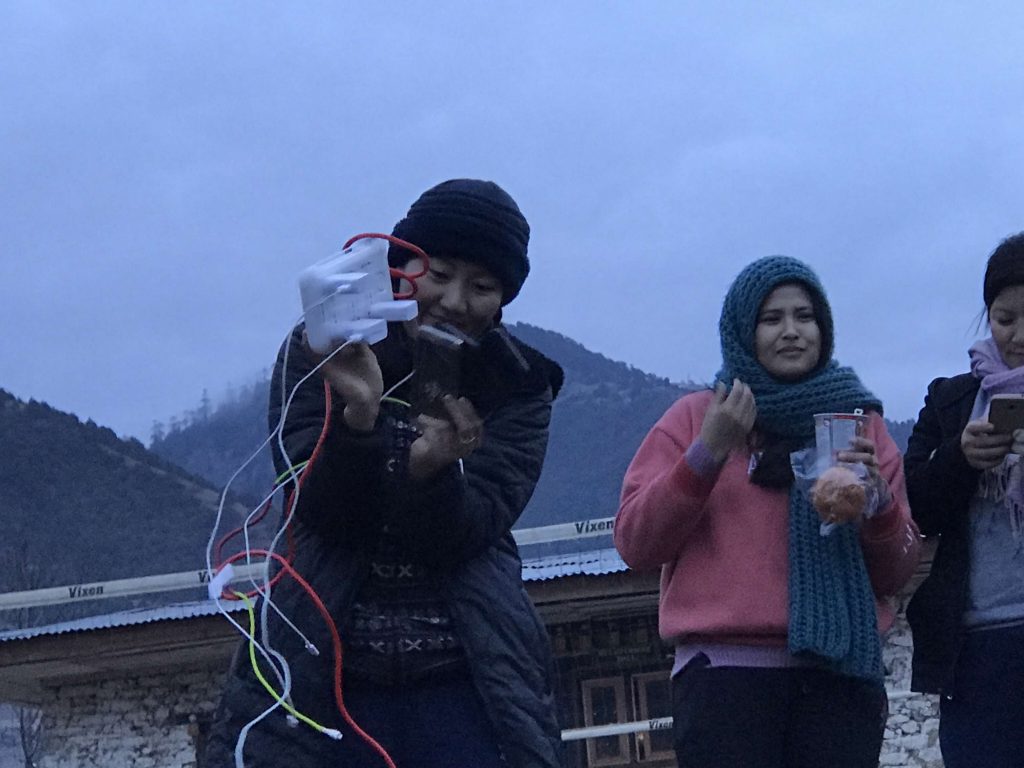
We drove back through hillsides of rhododendrons: so beautiful, so impossible to show their expansiveness.
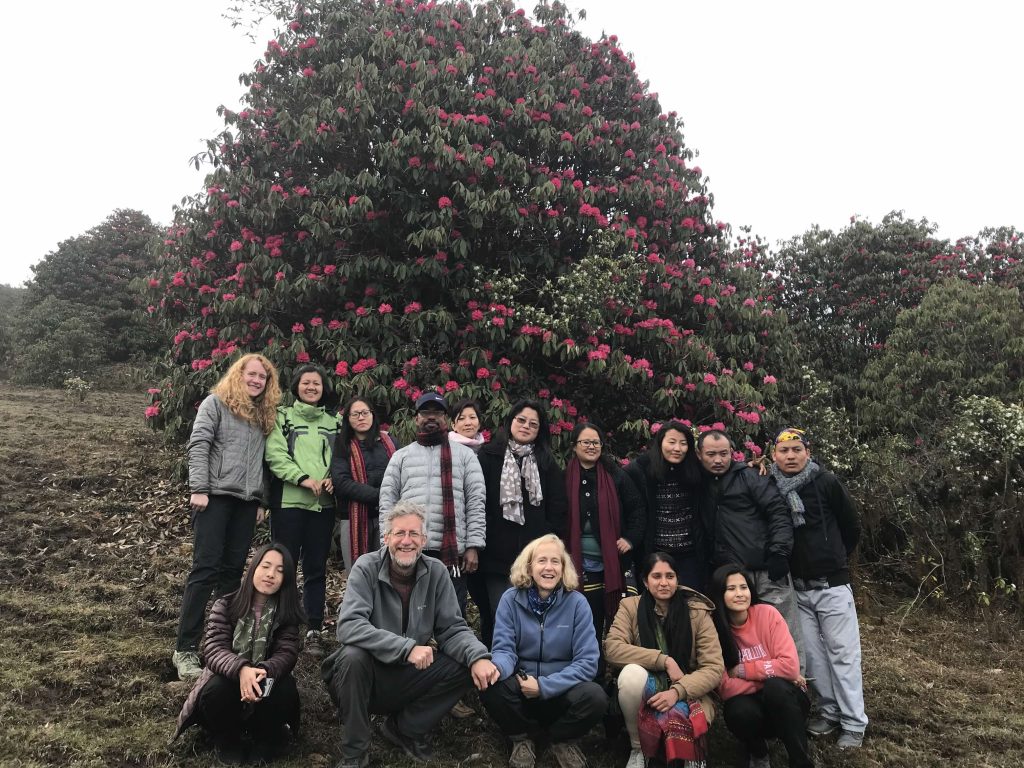
We walked part of the way down the road past the rhododendrons, past the ponies, toward the mountaintop with the monastery on its summit.
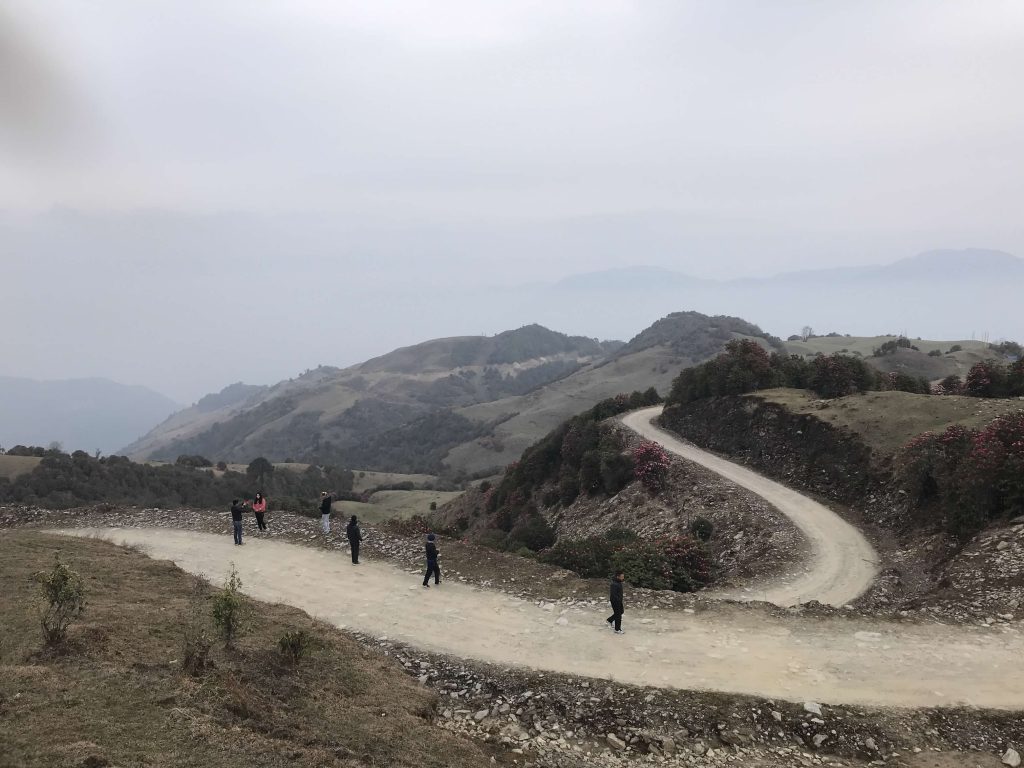
Then on to the next adventure: Sakteng!
